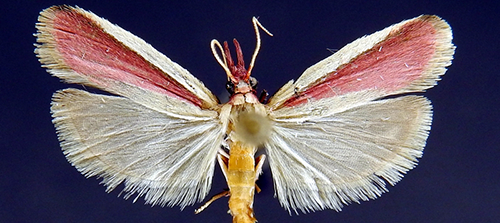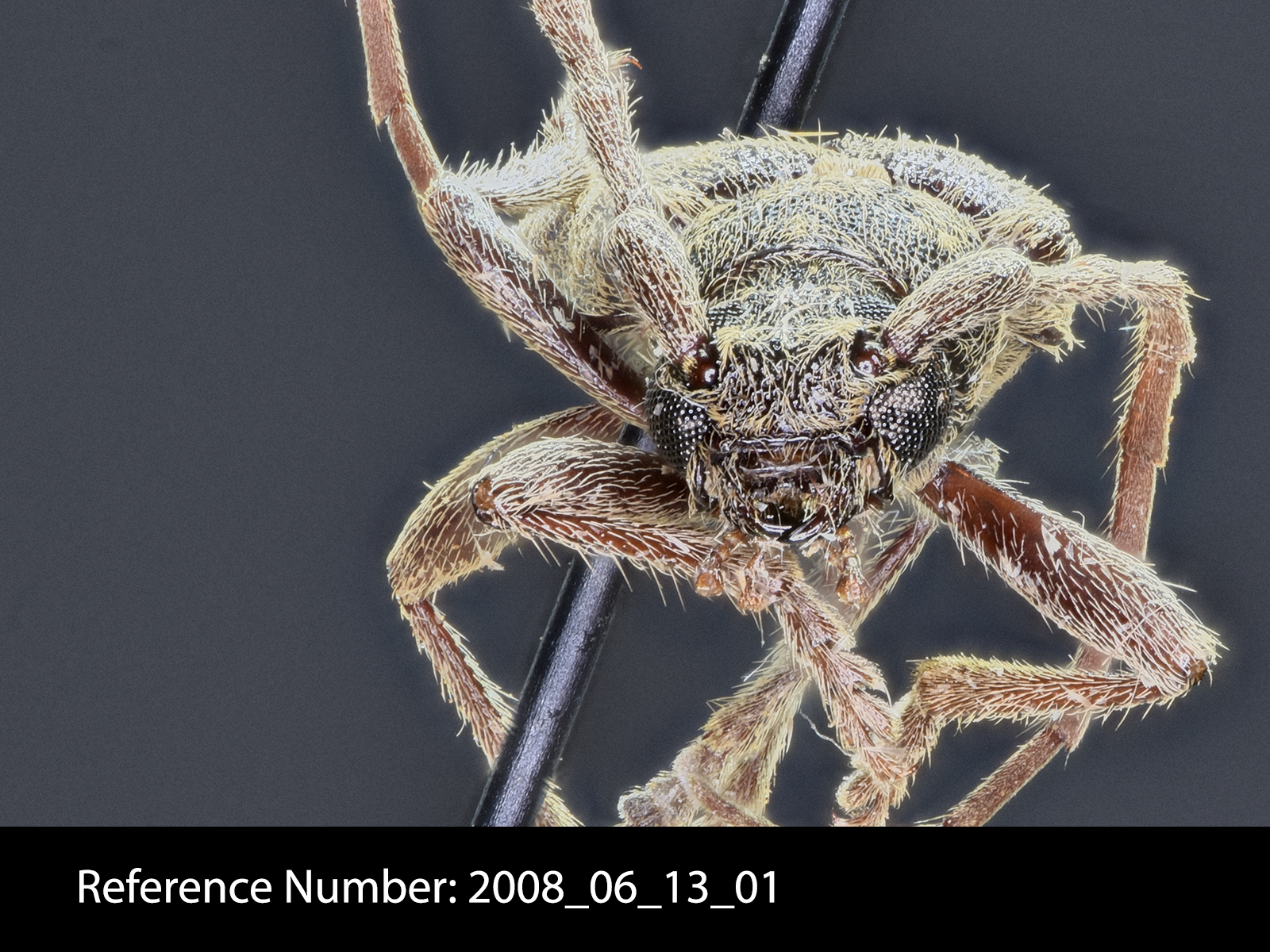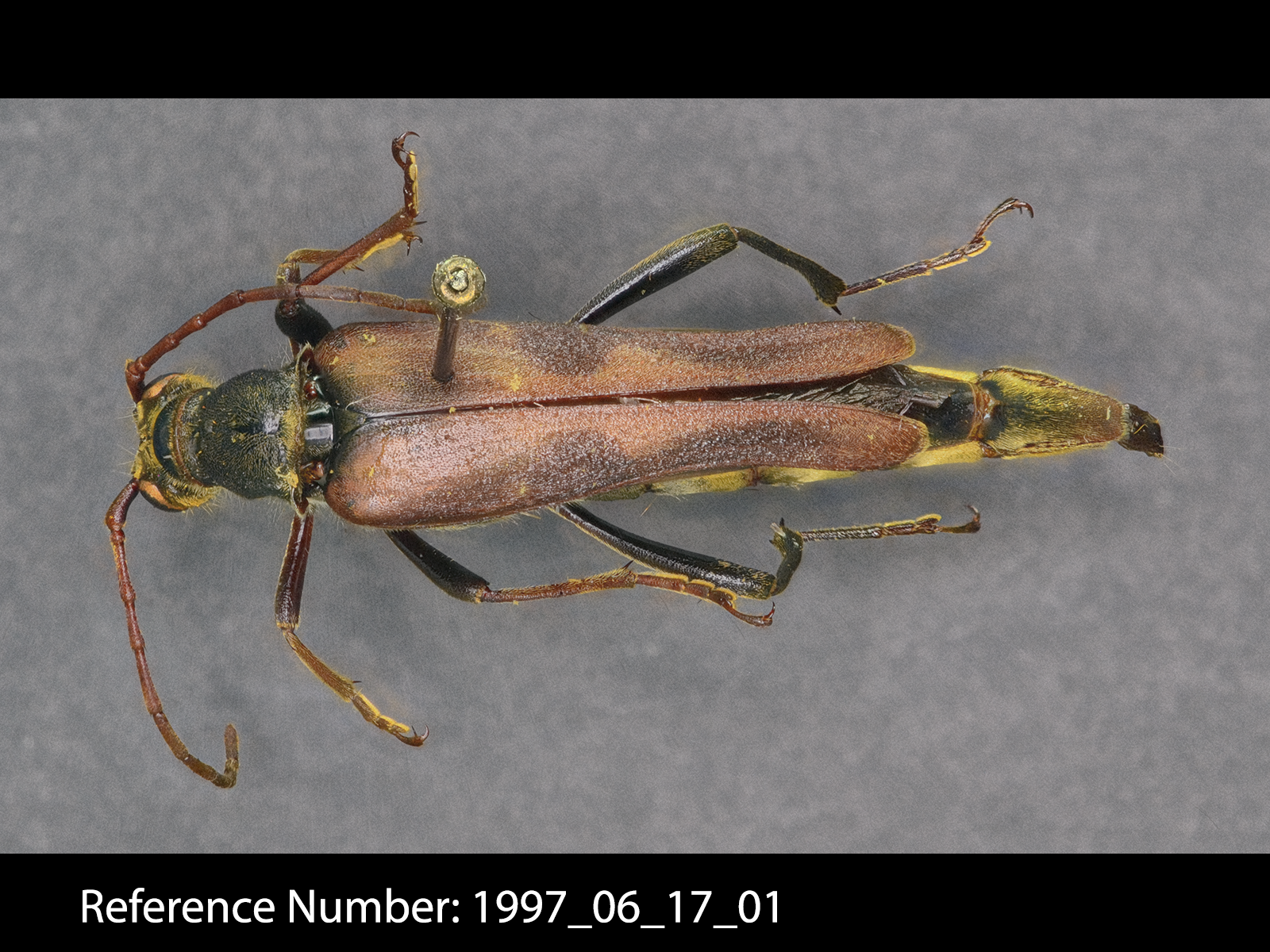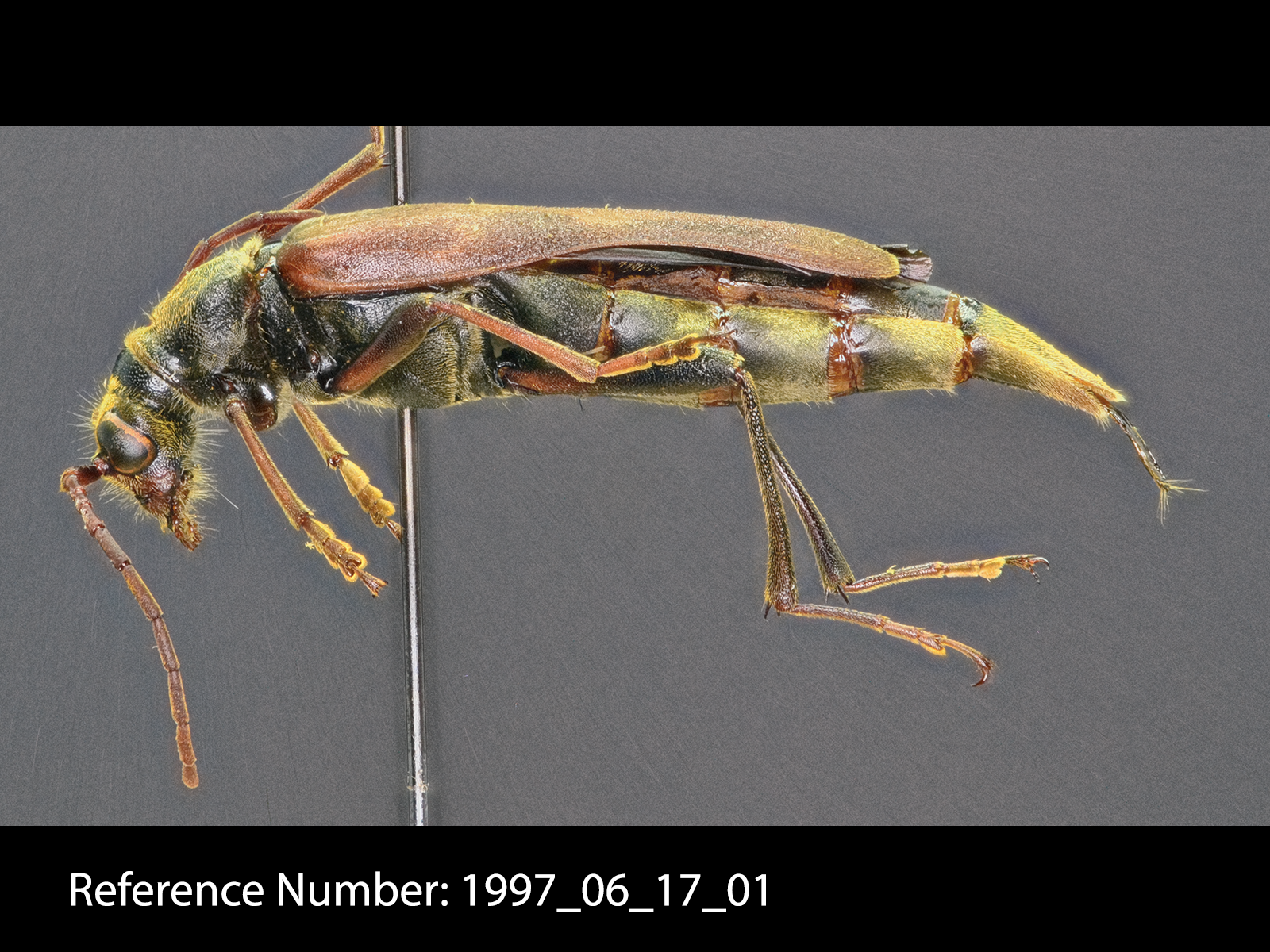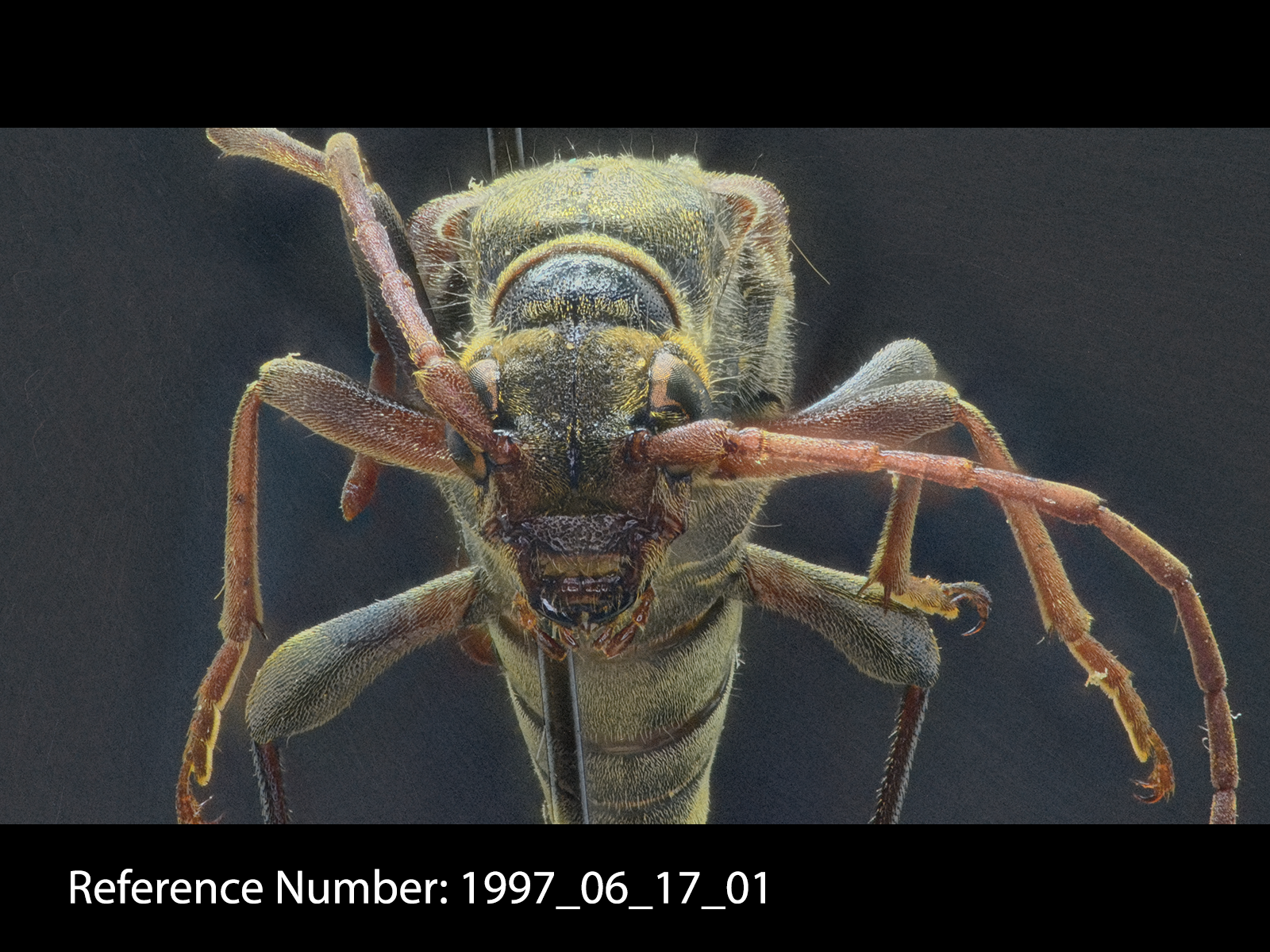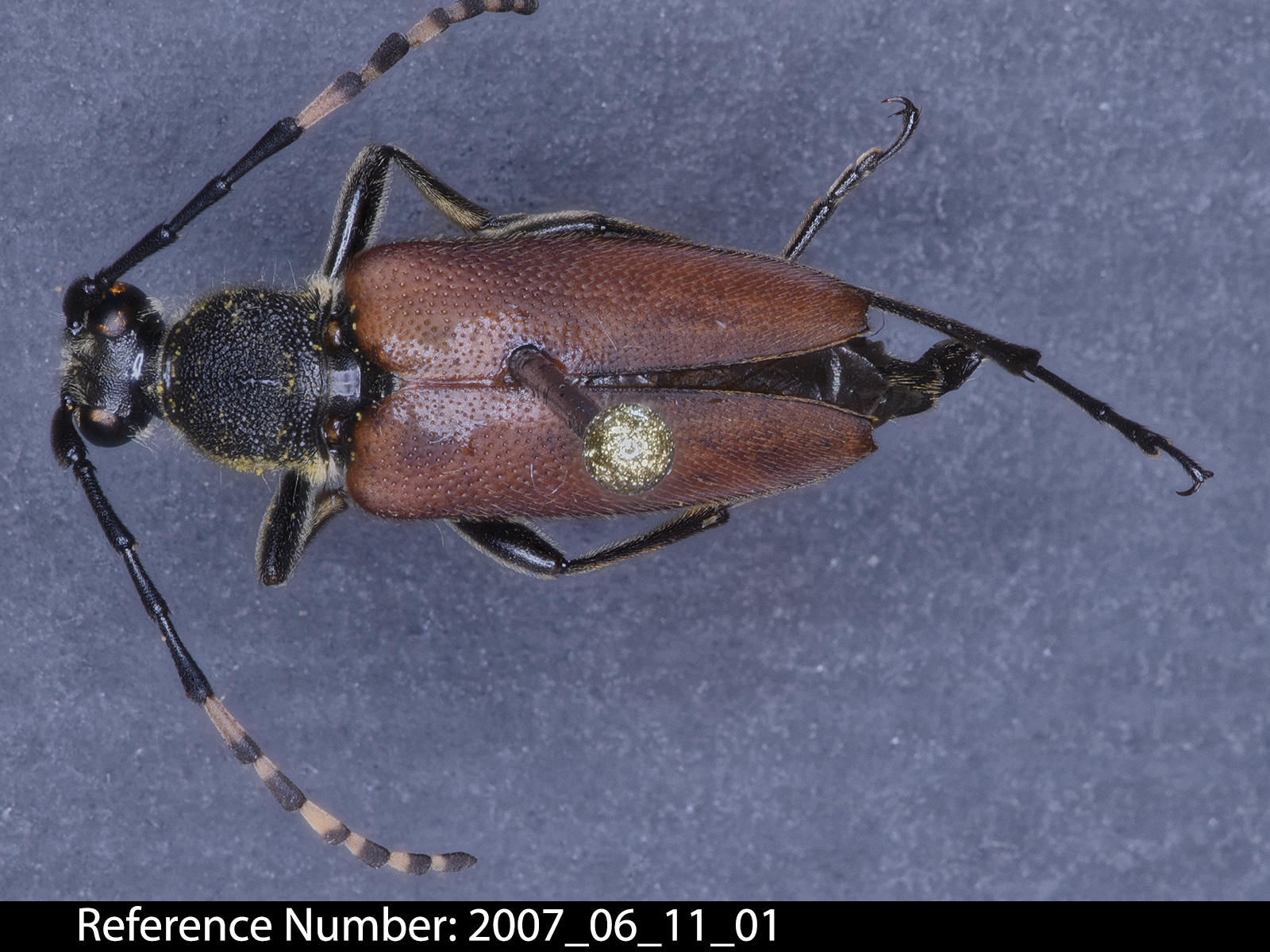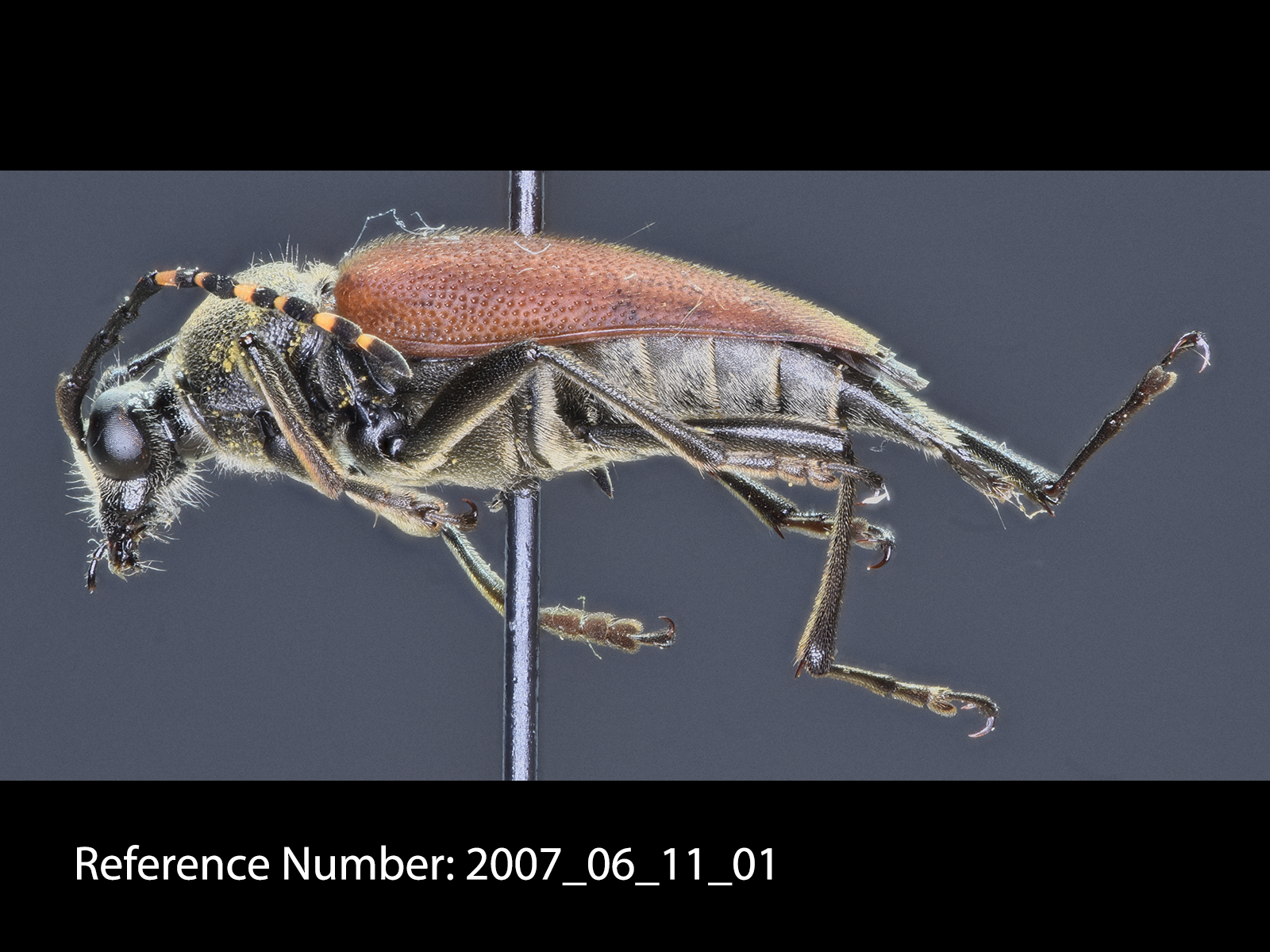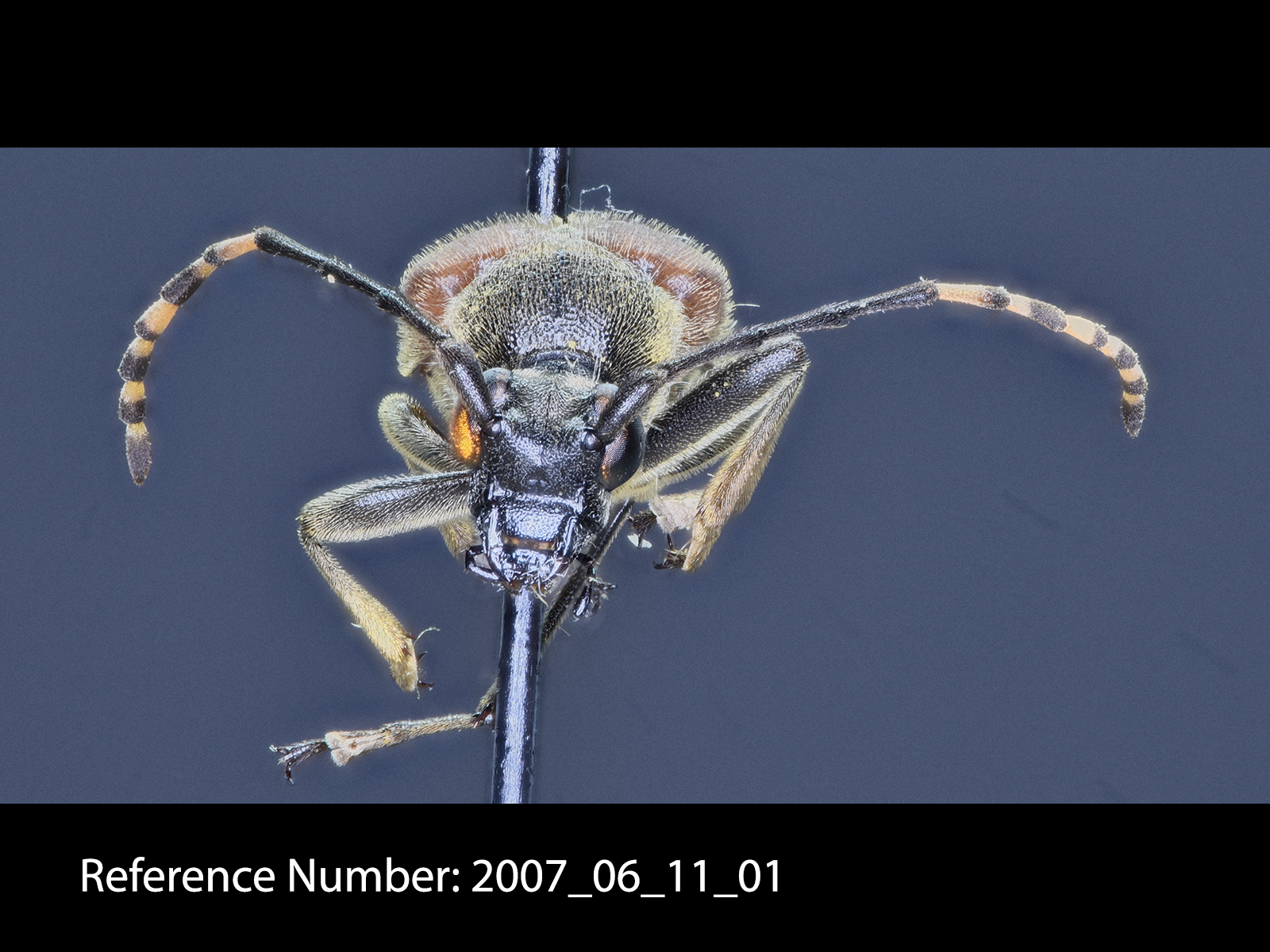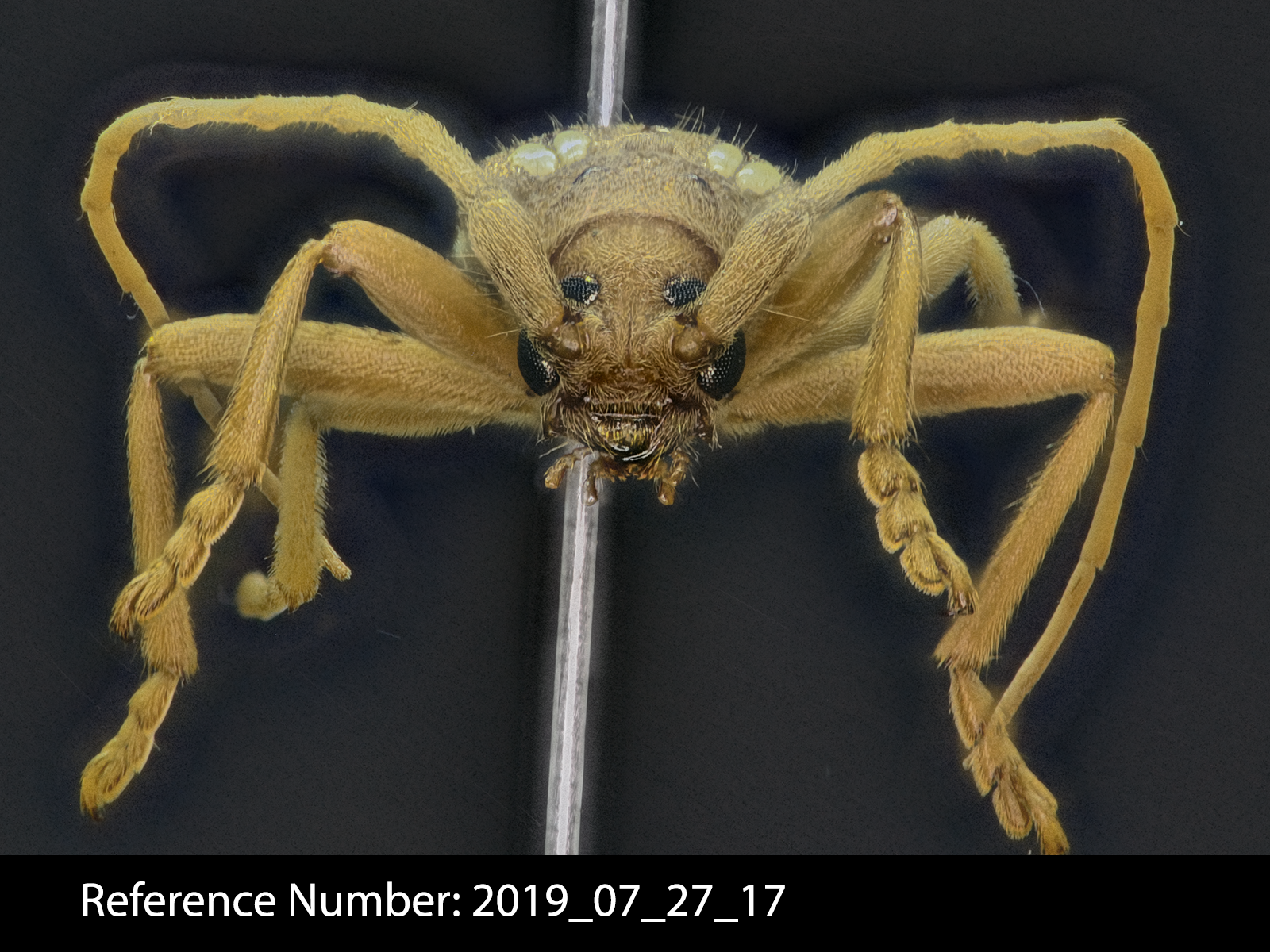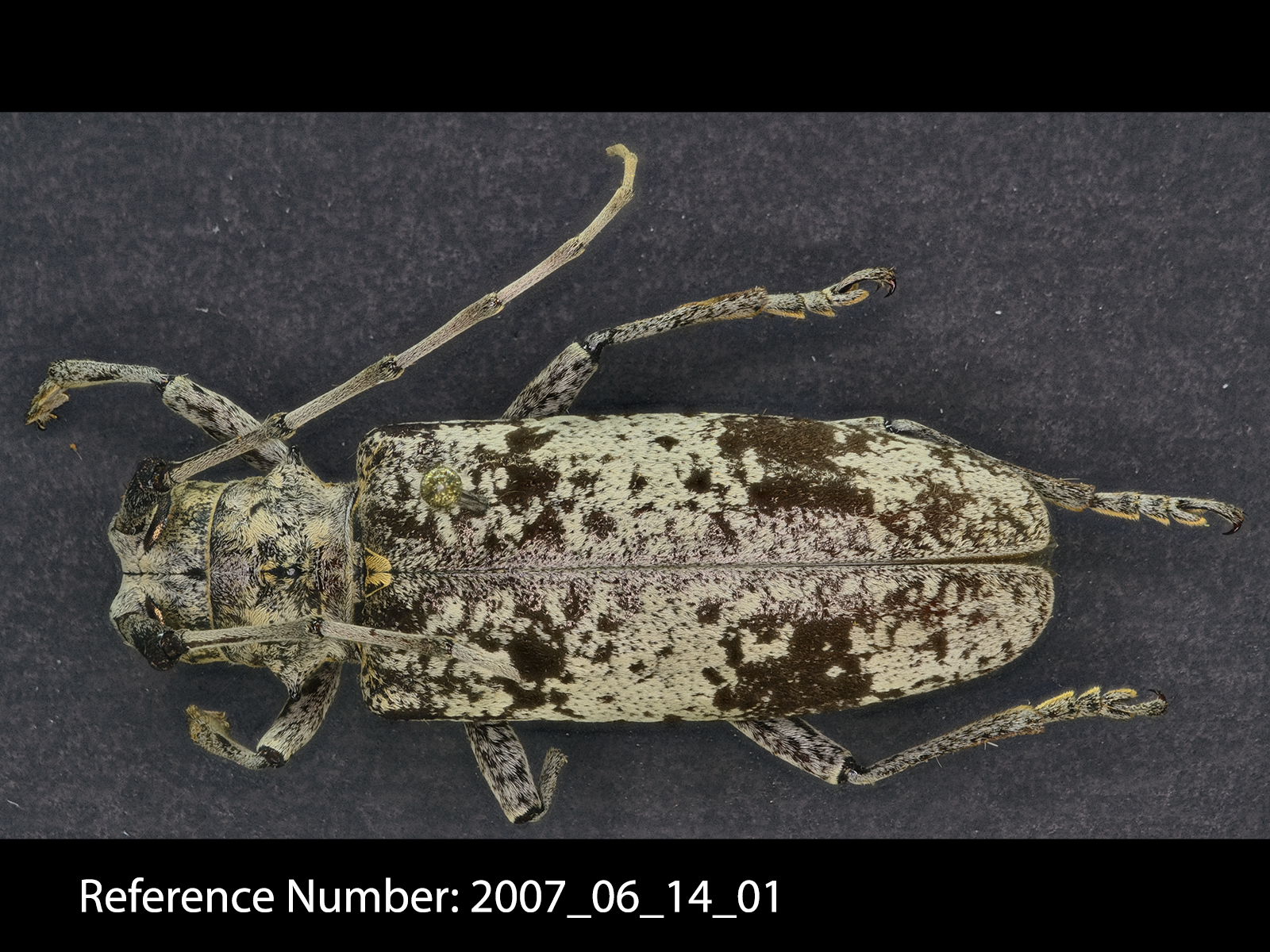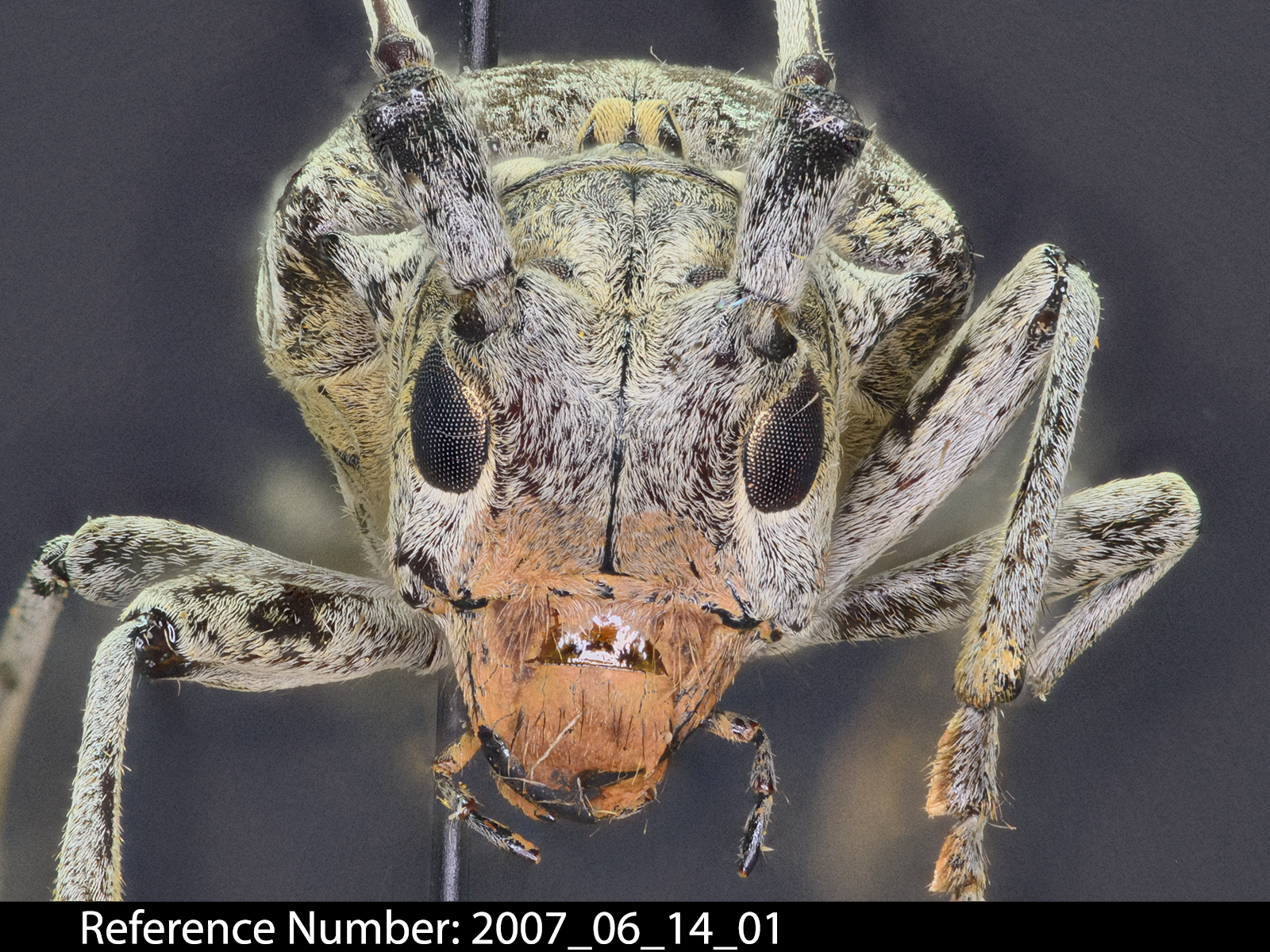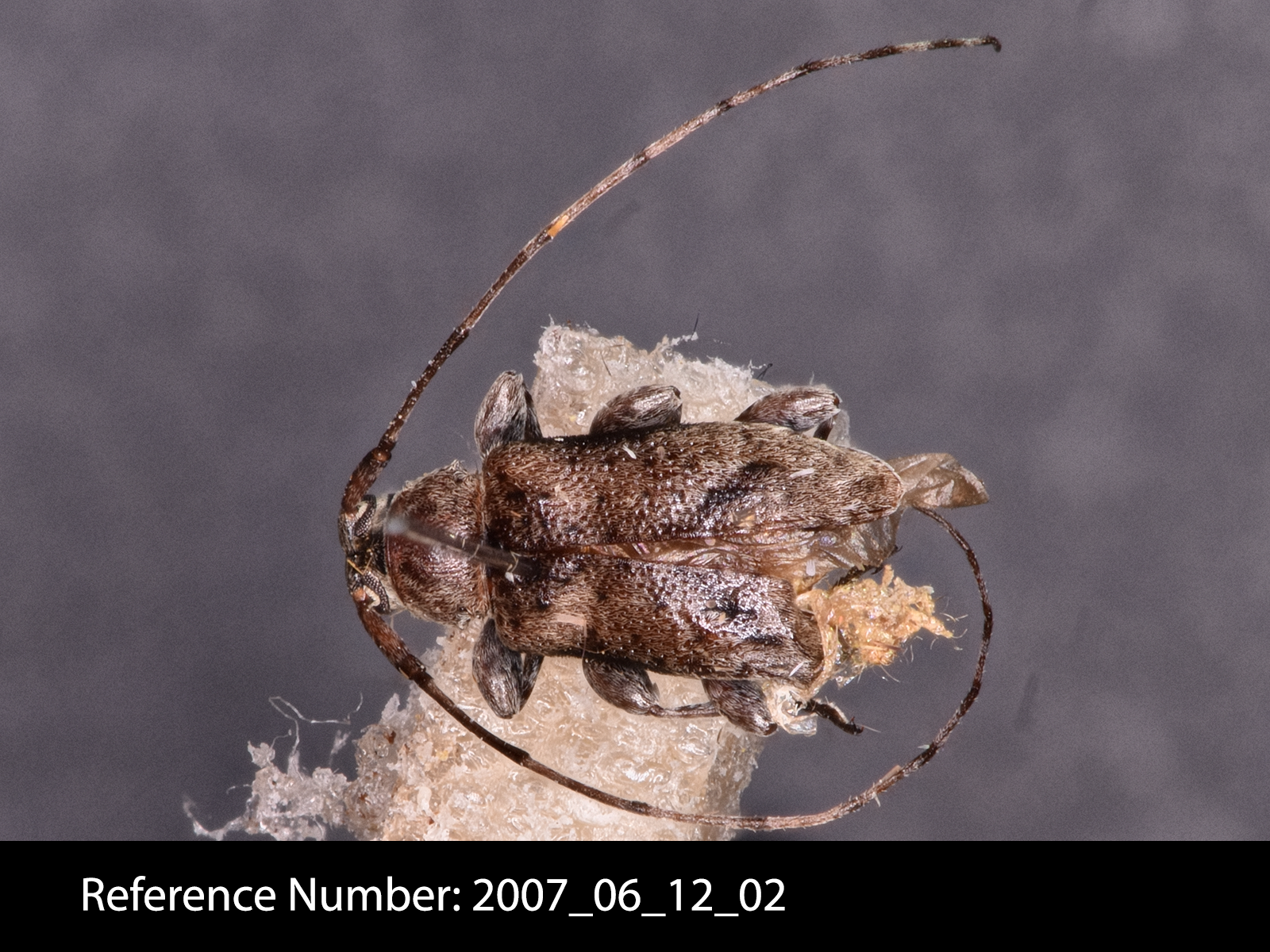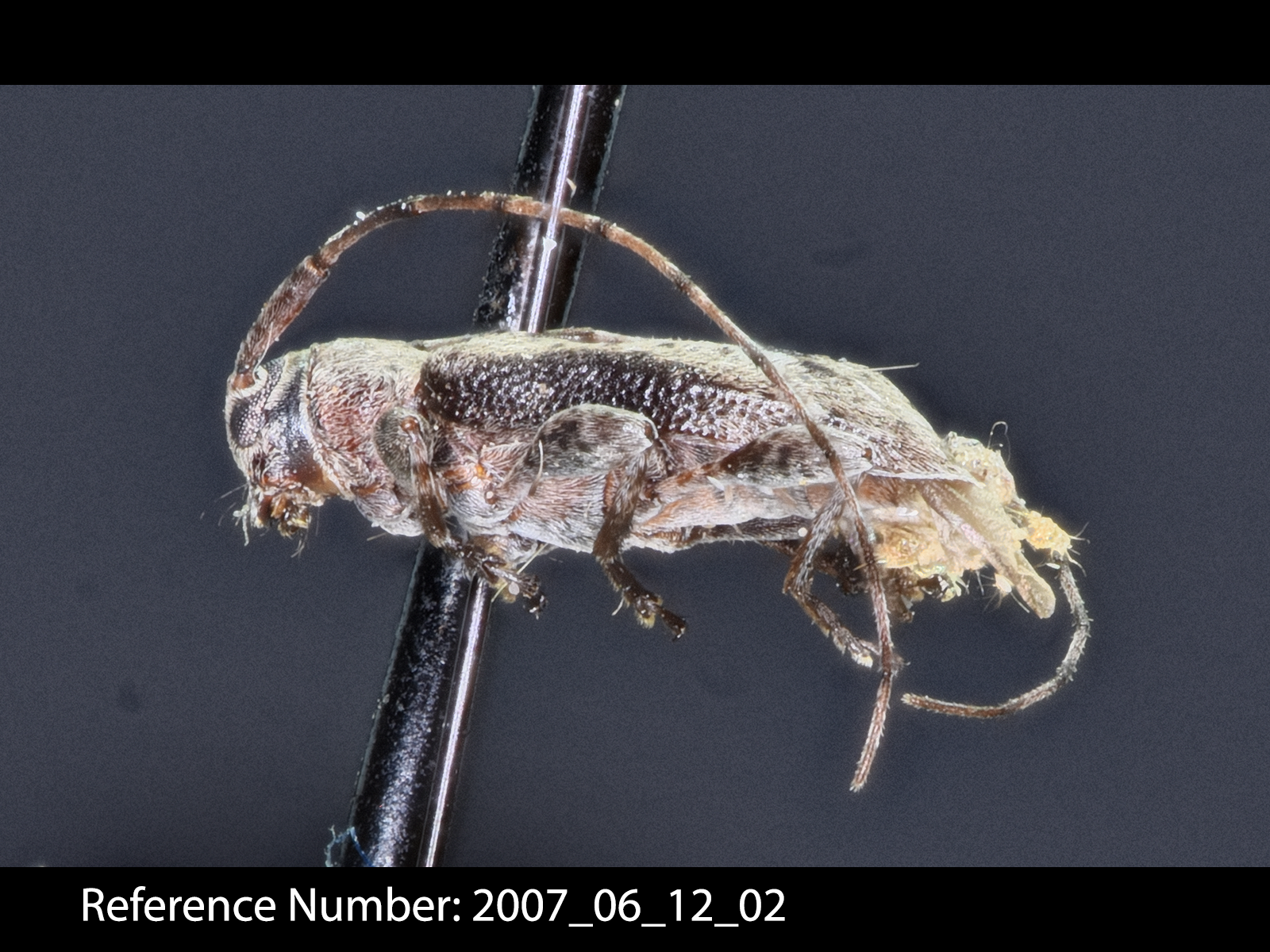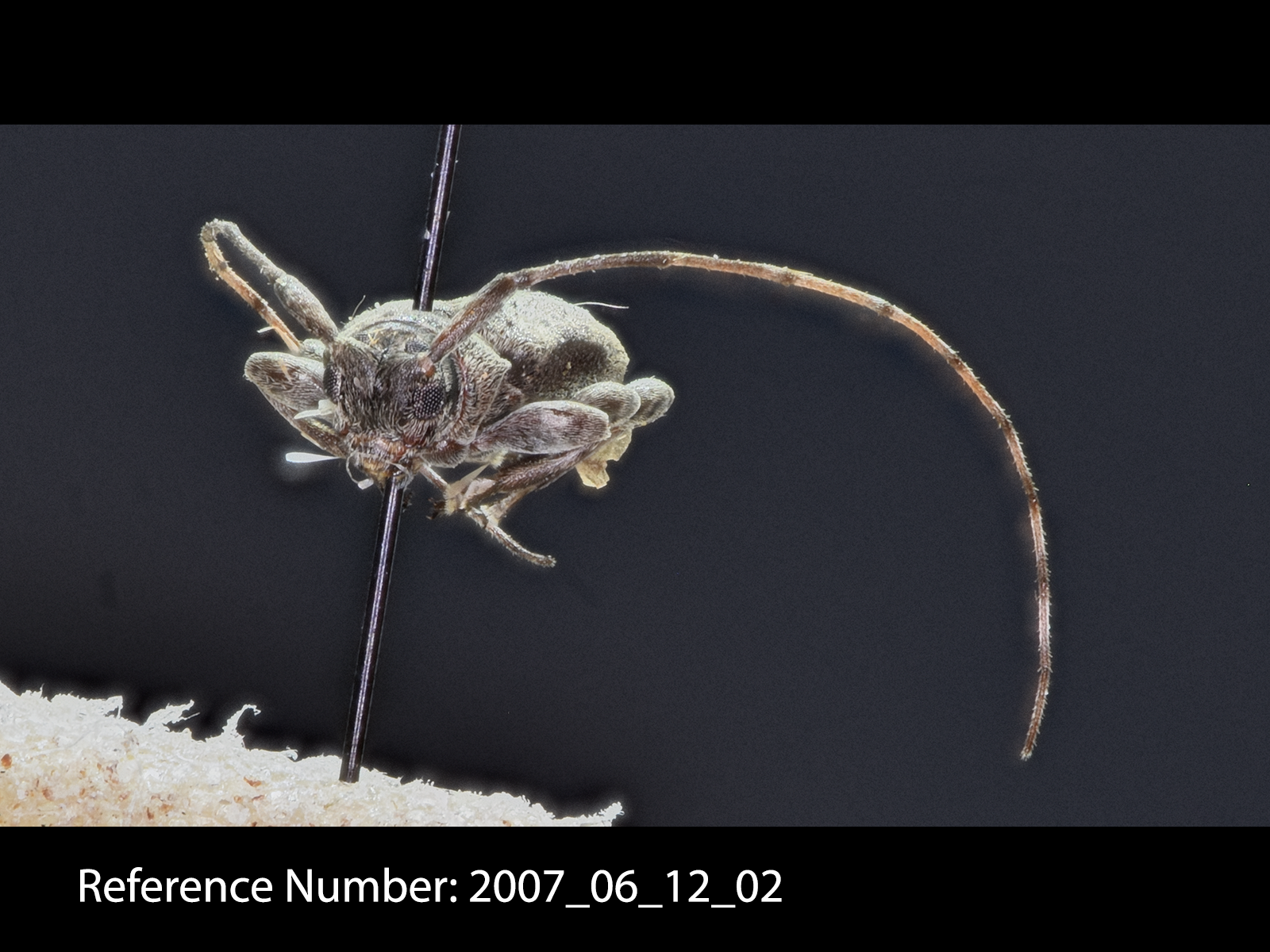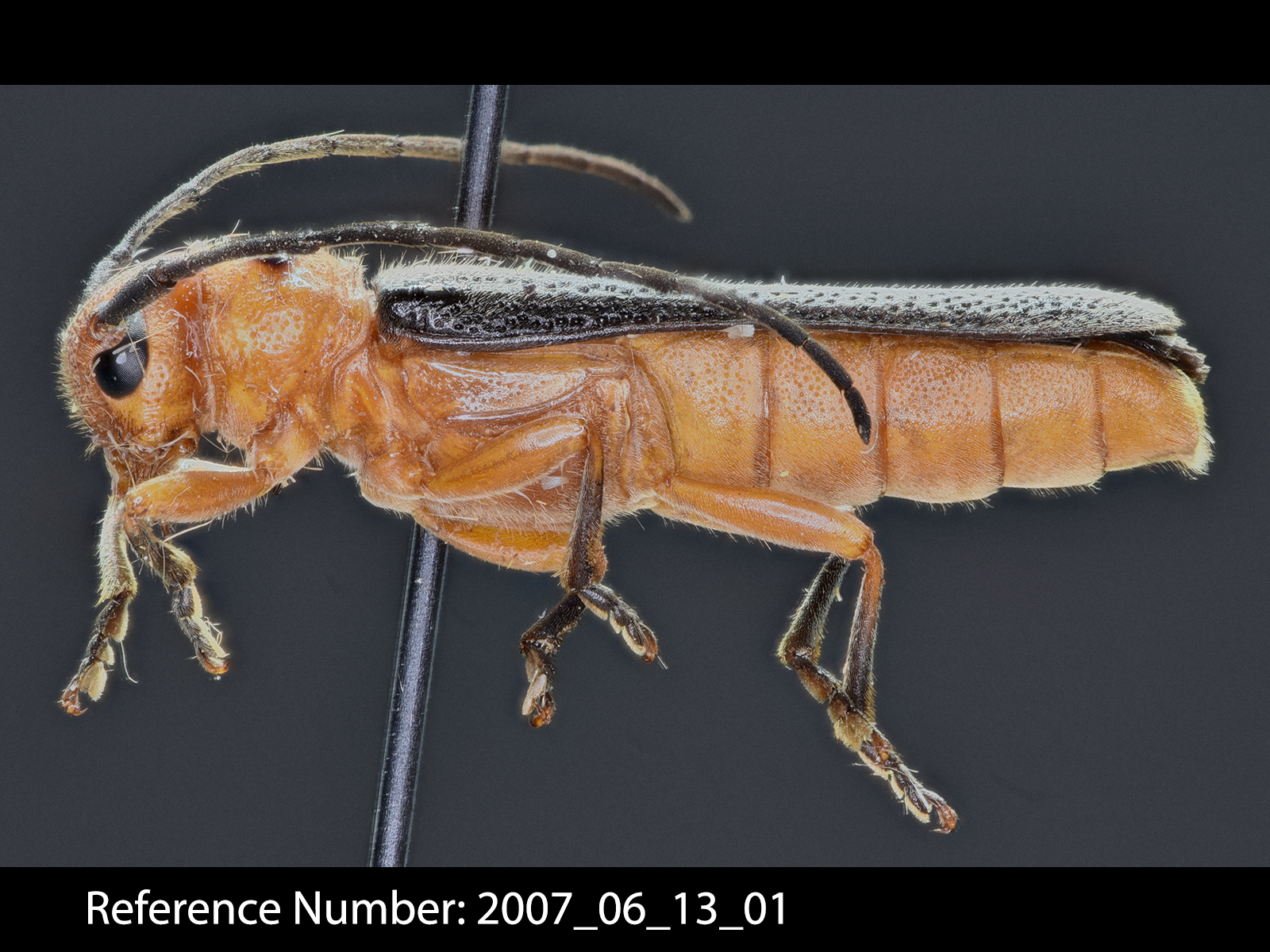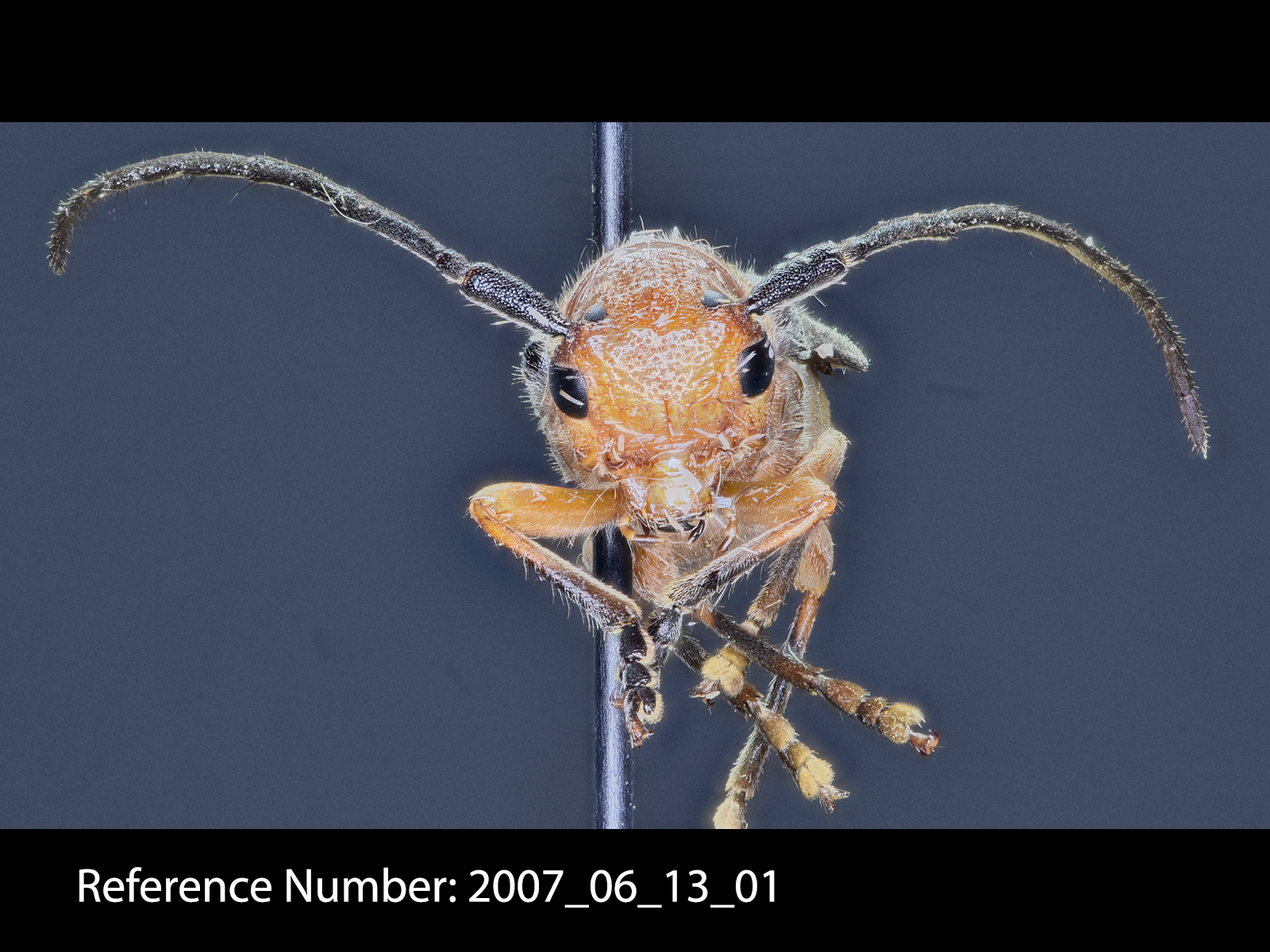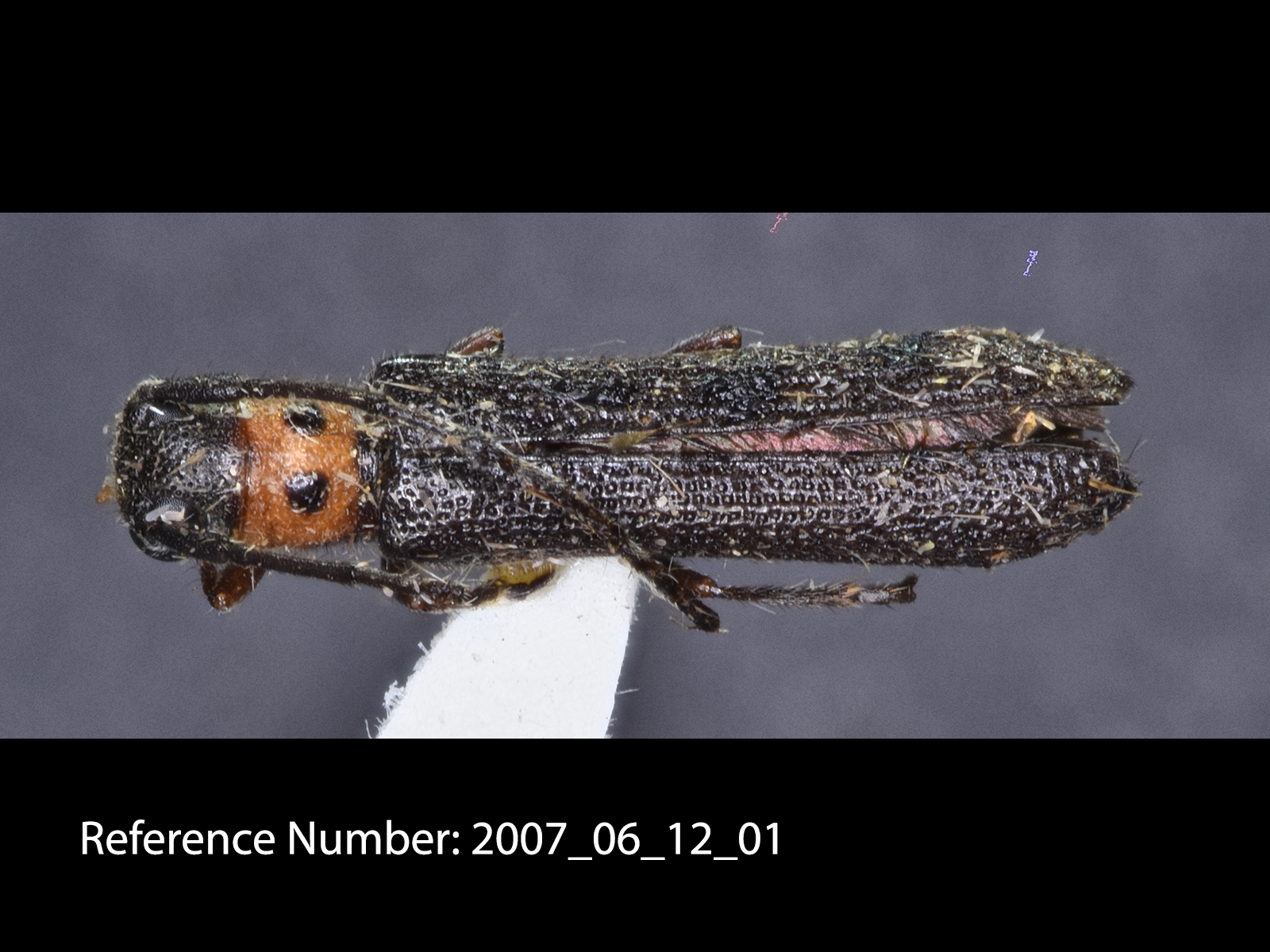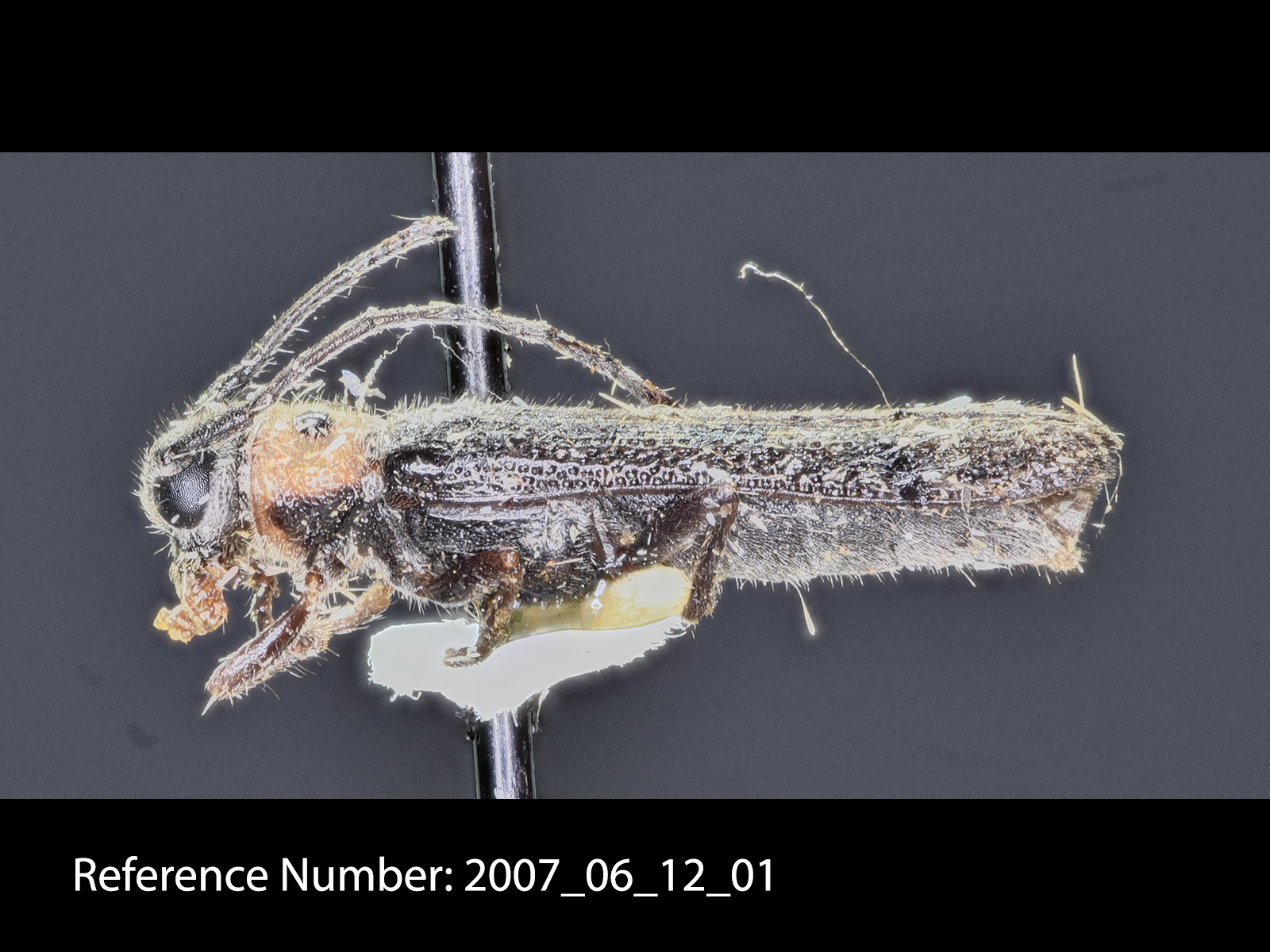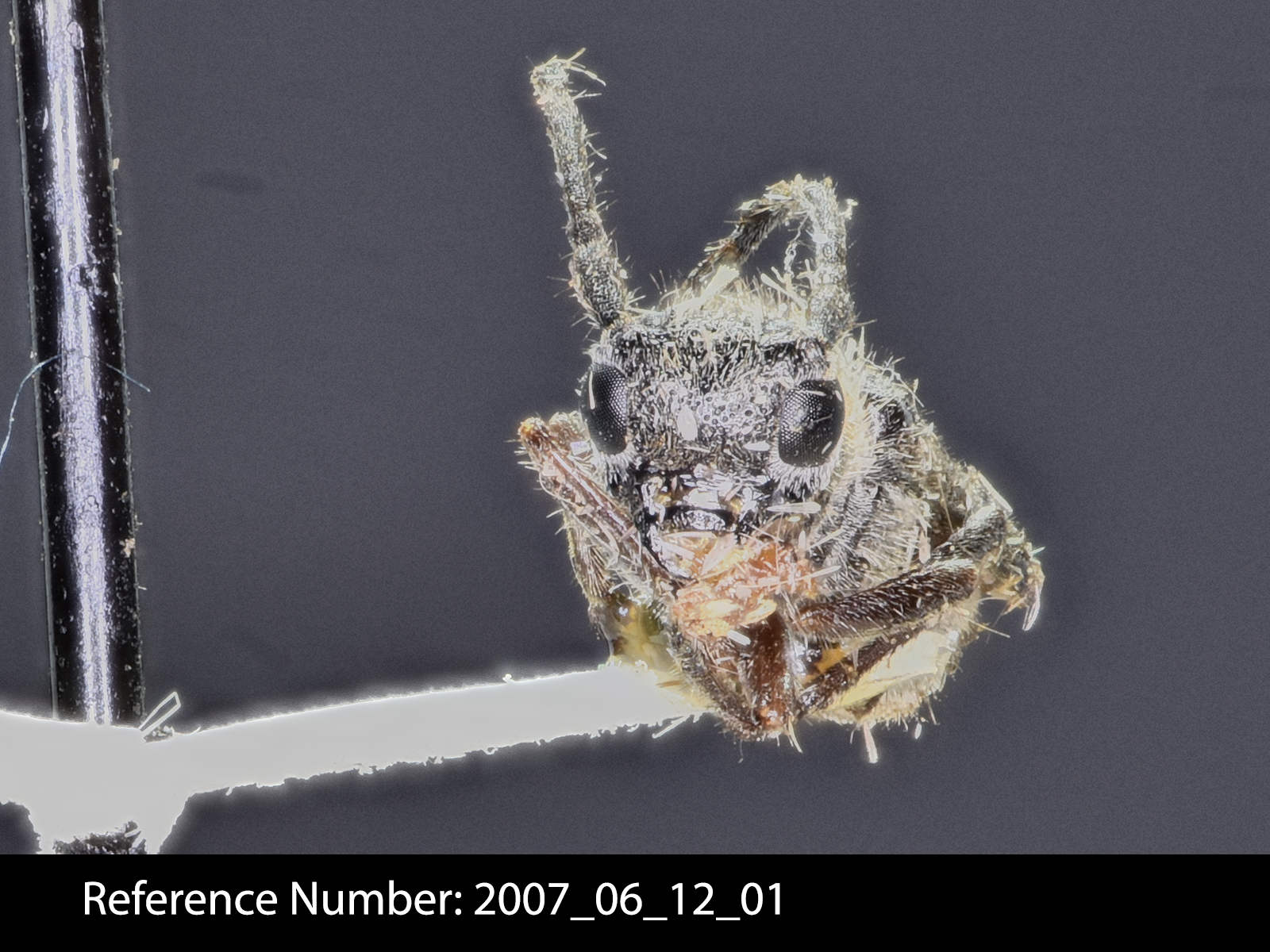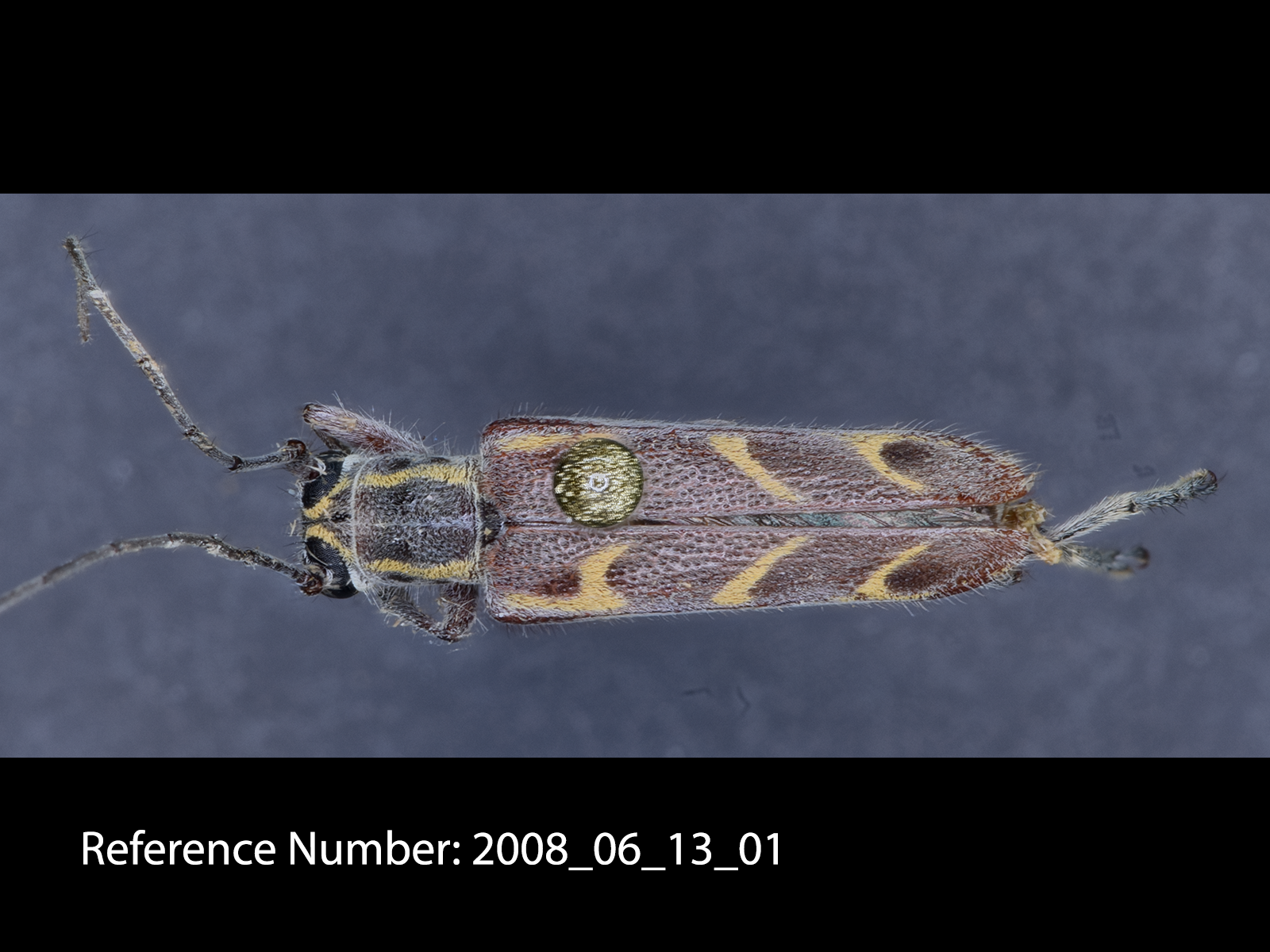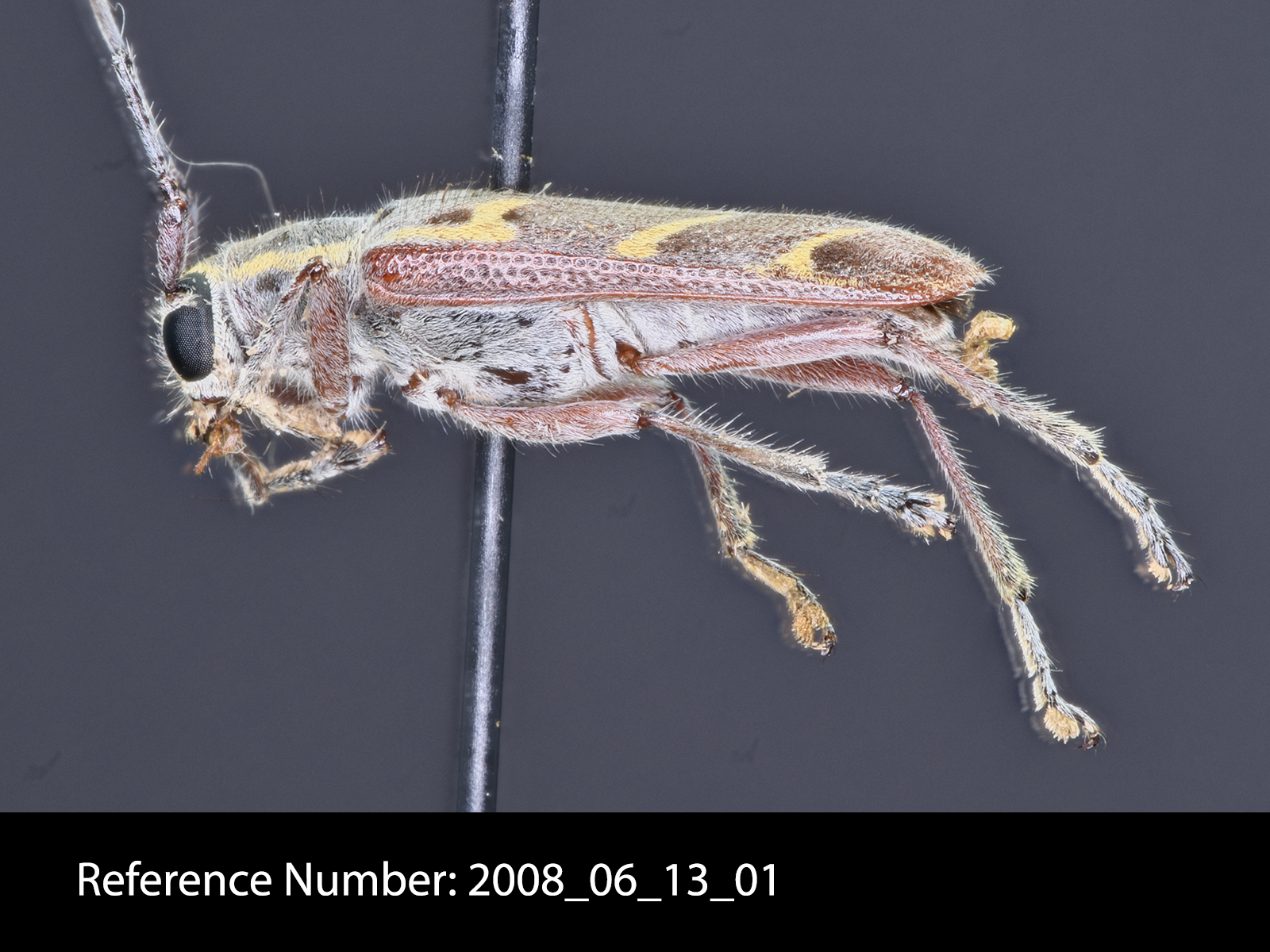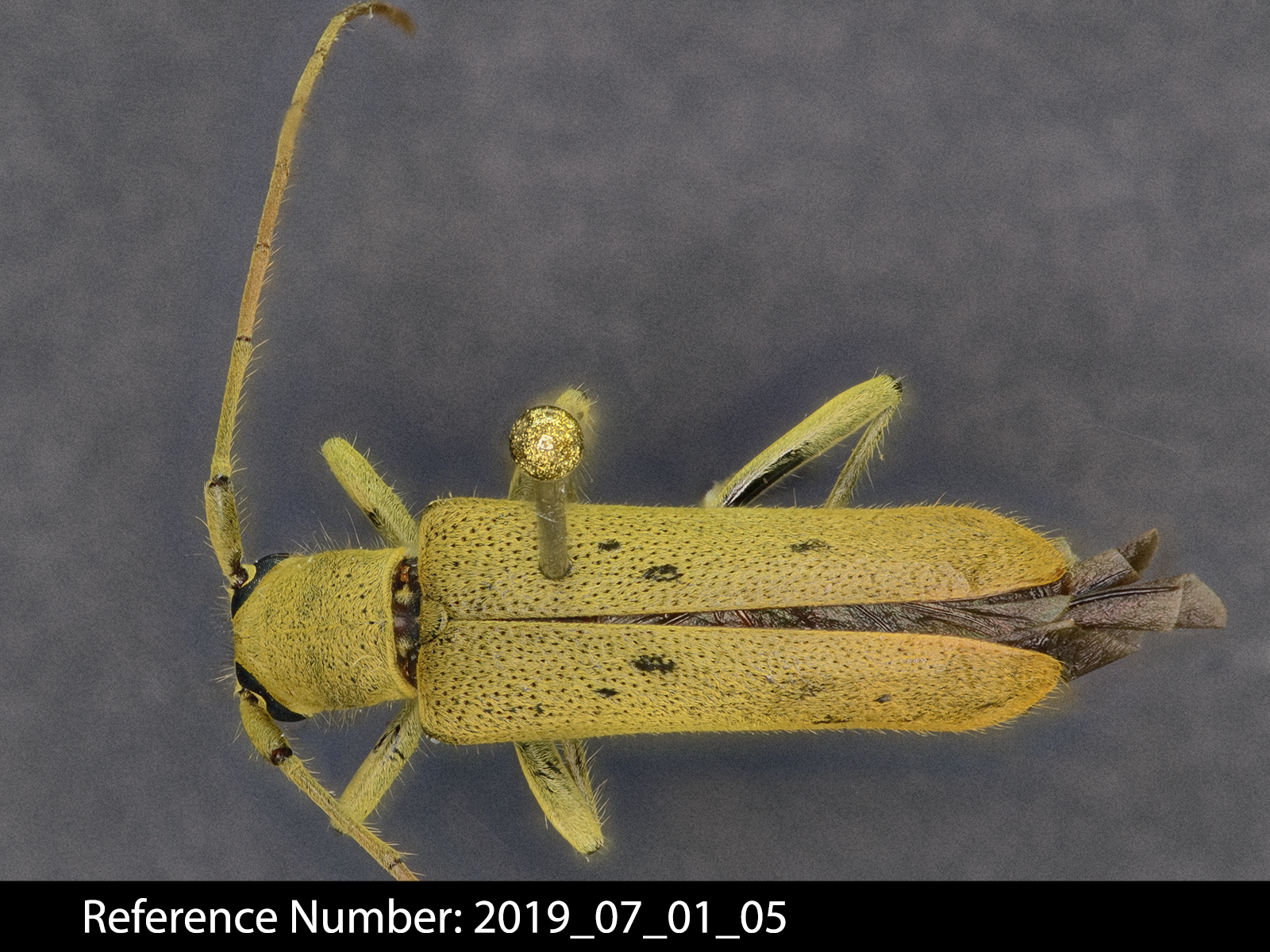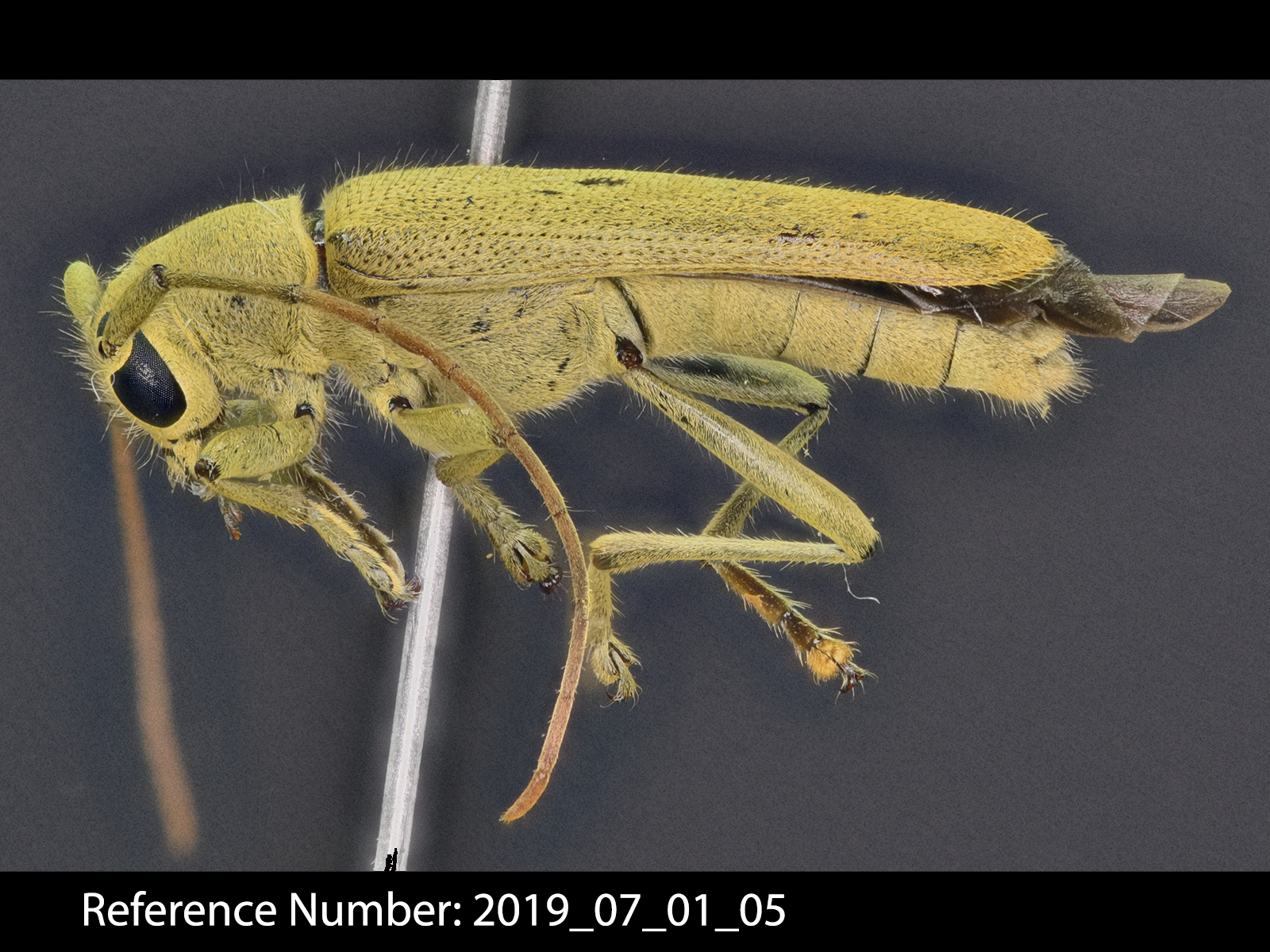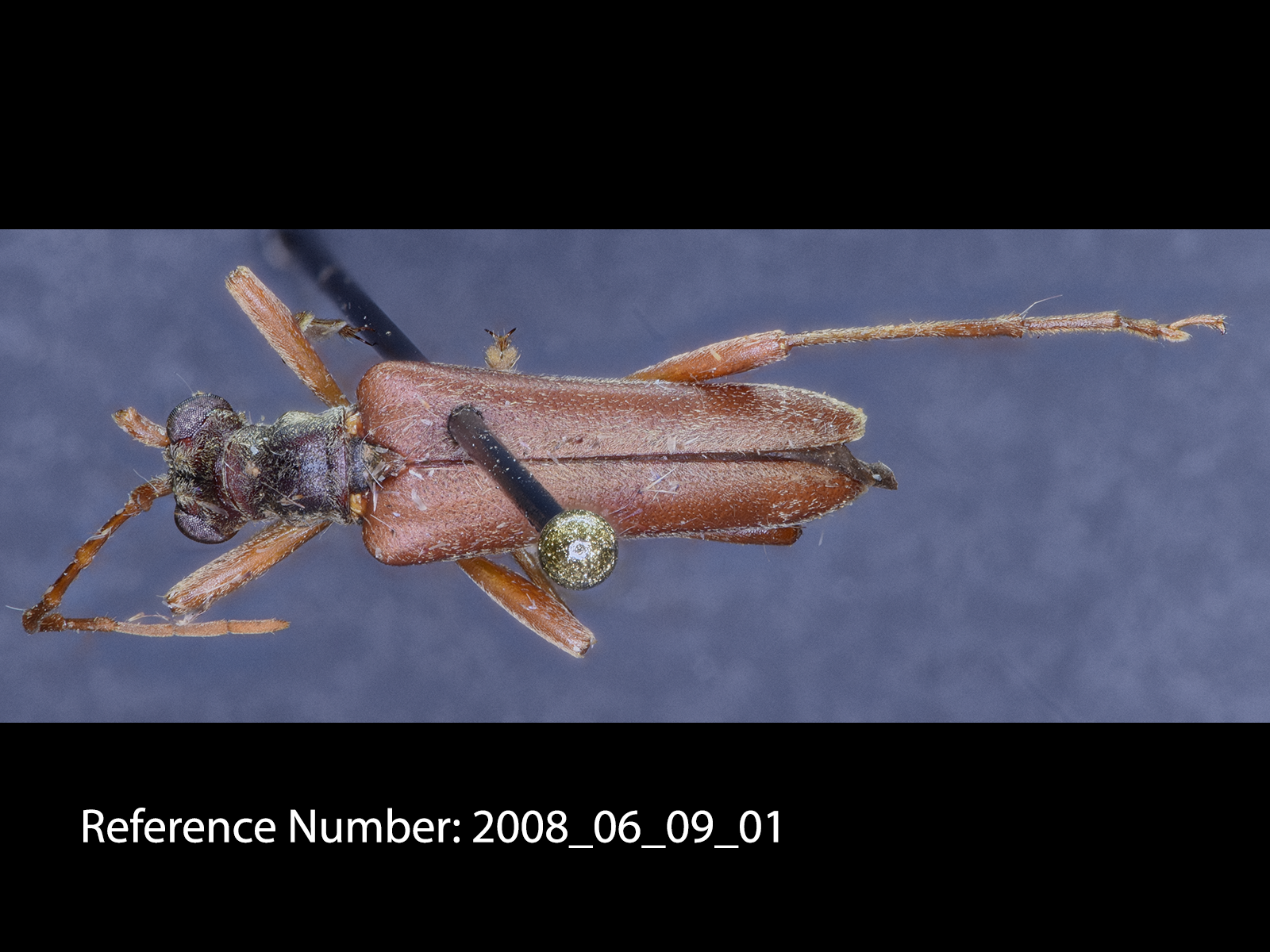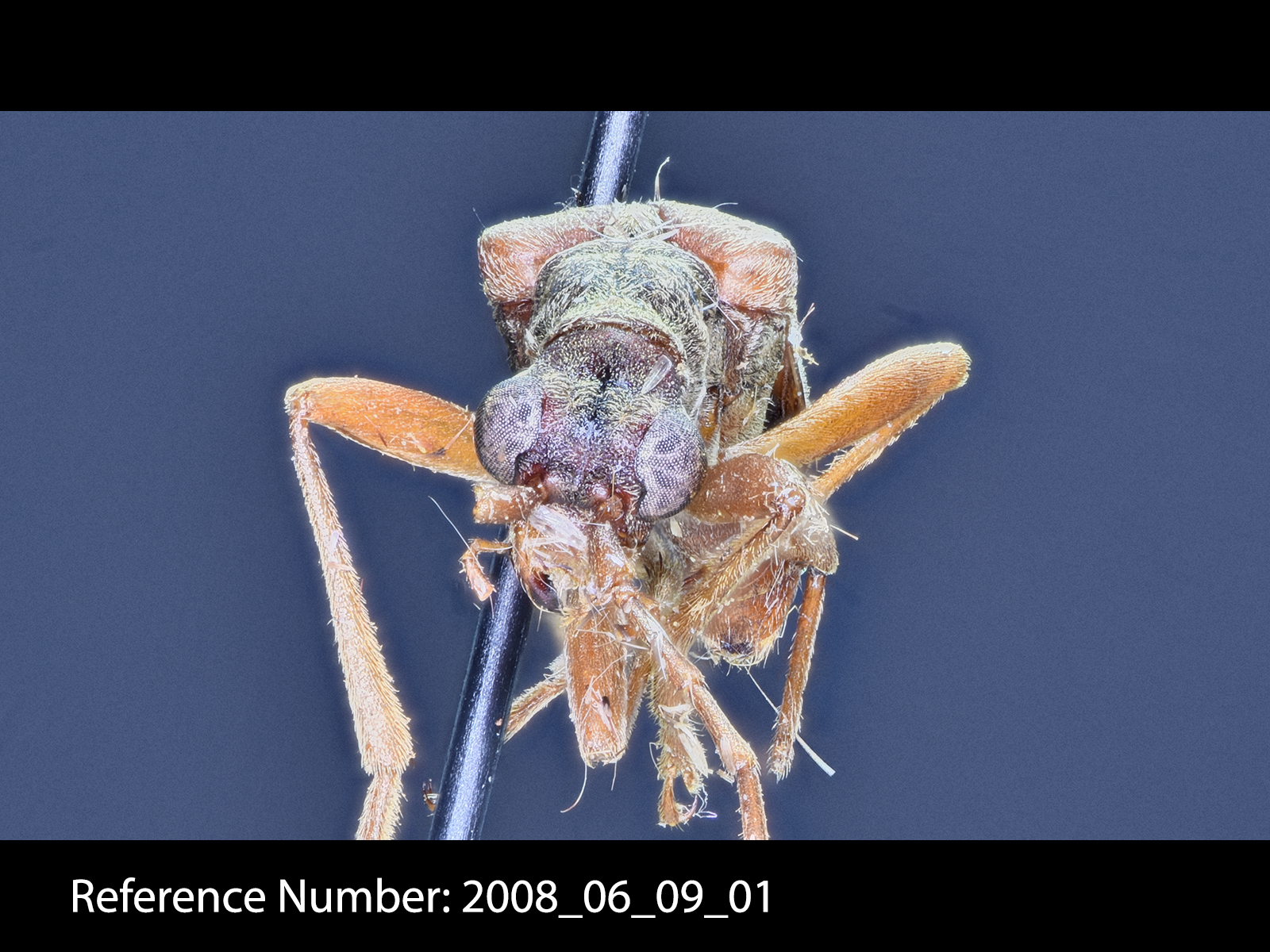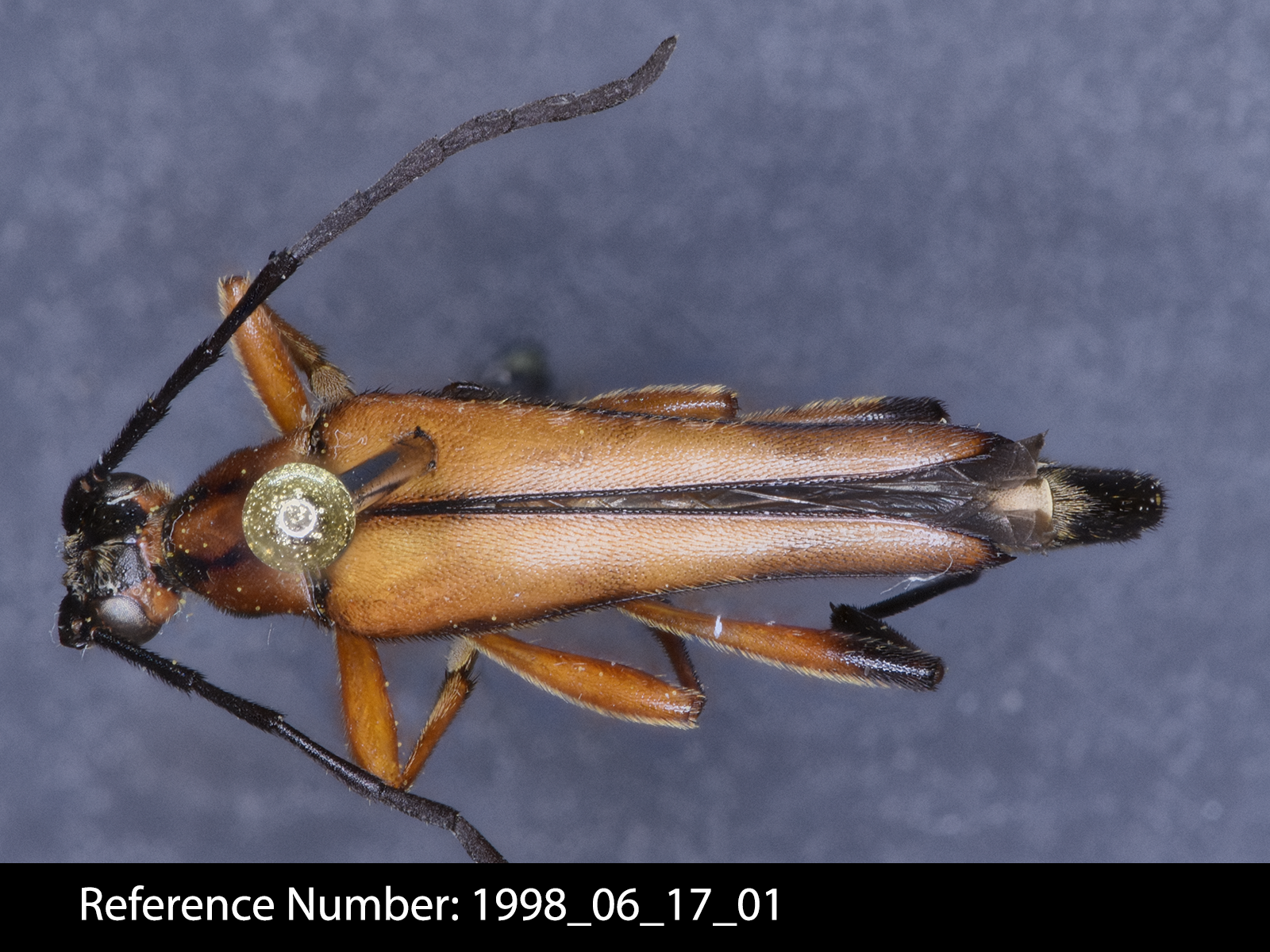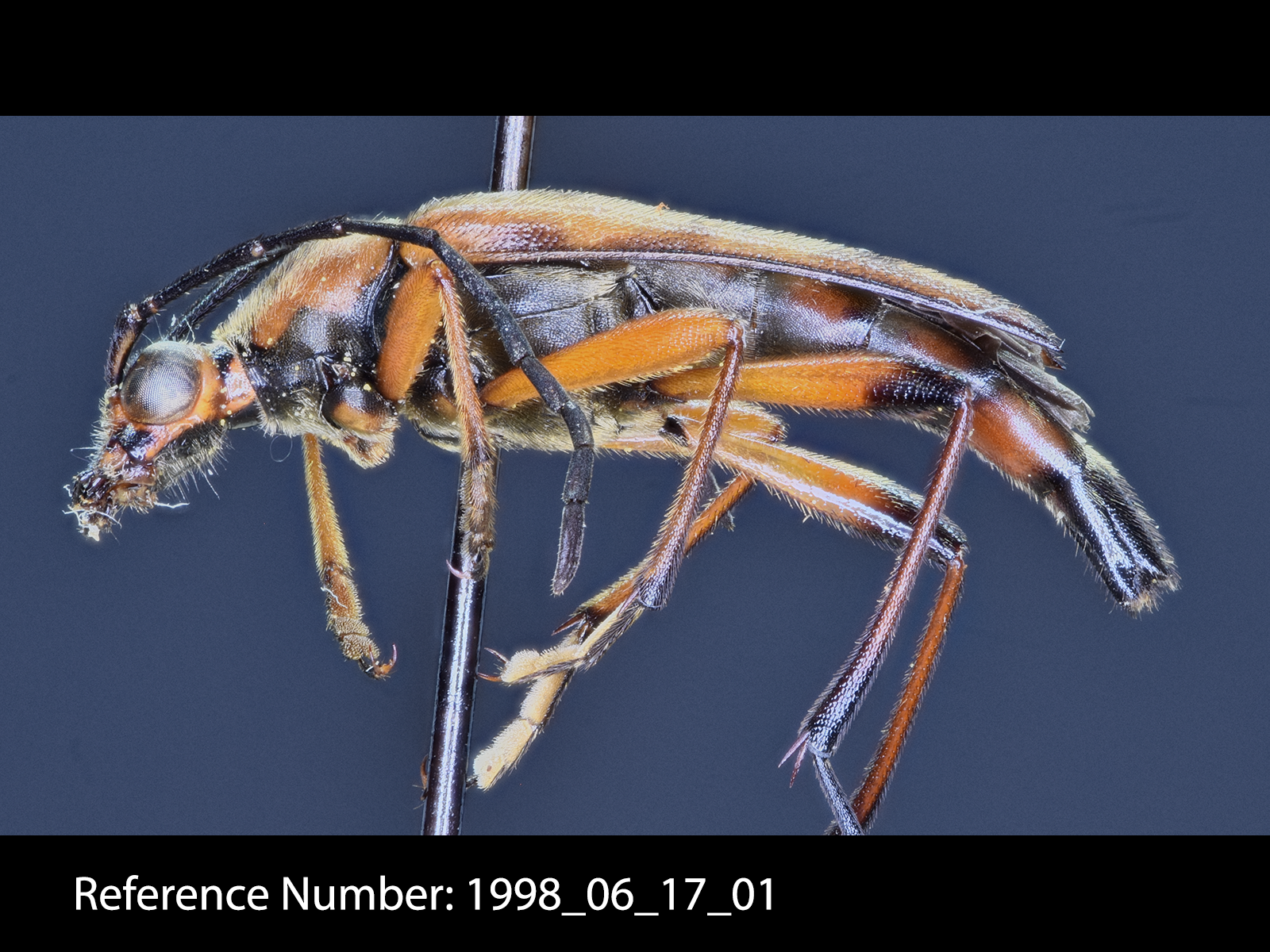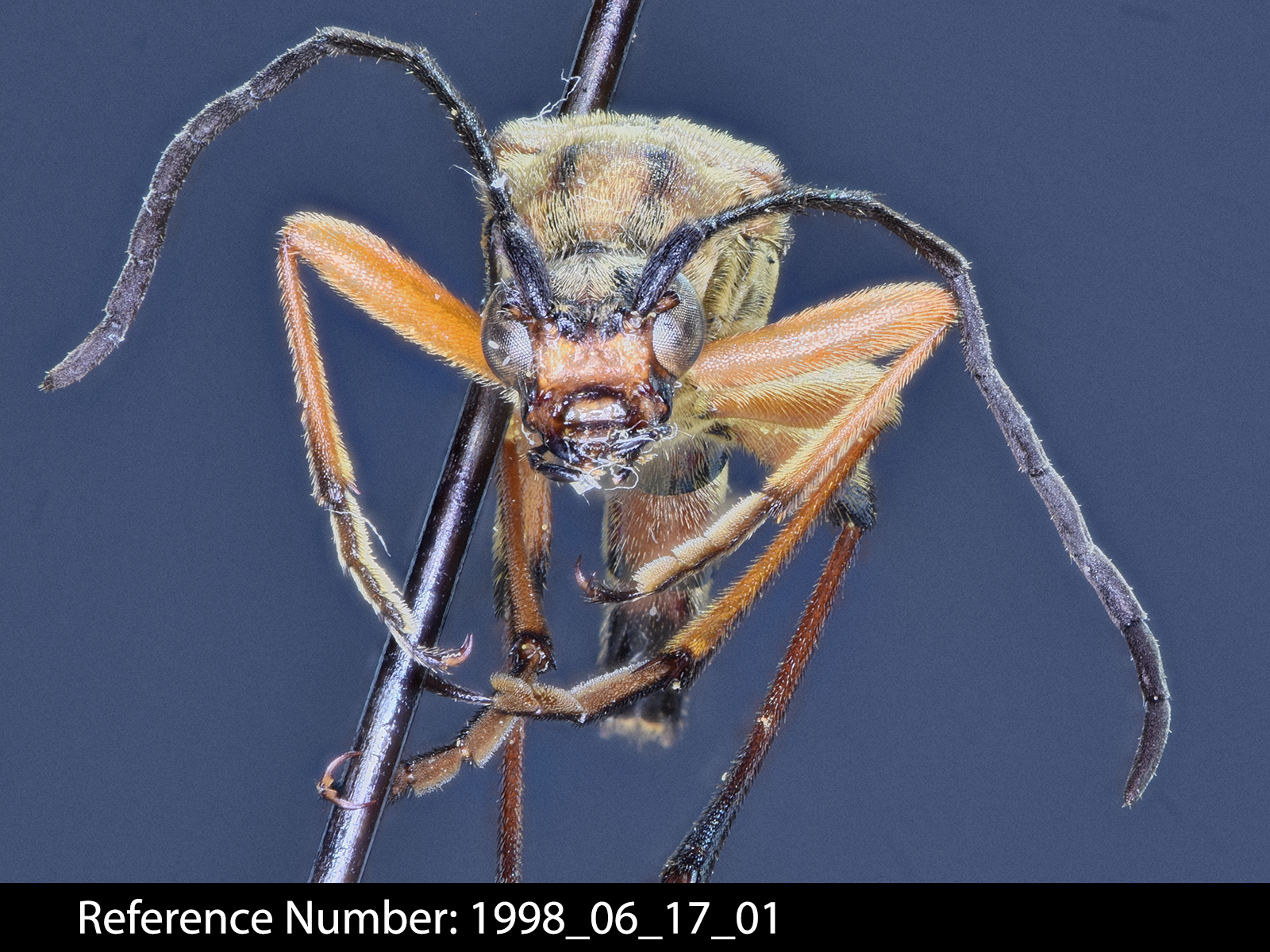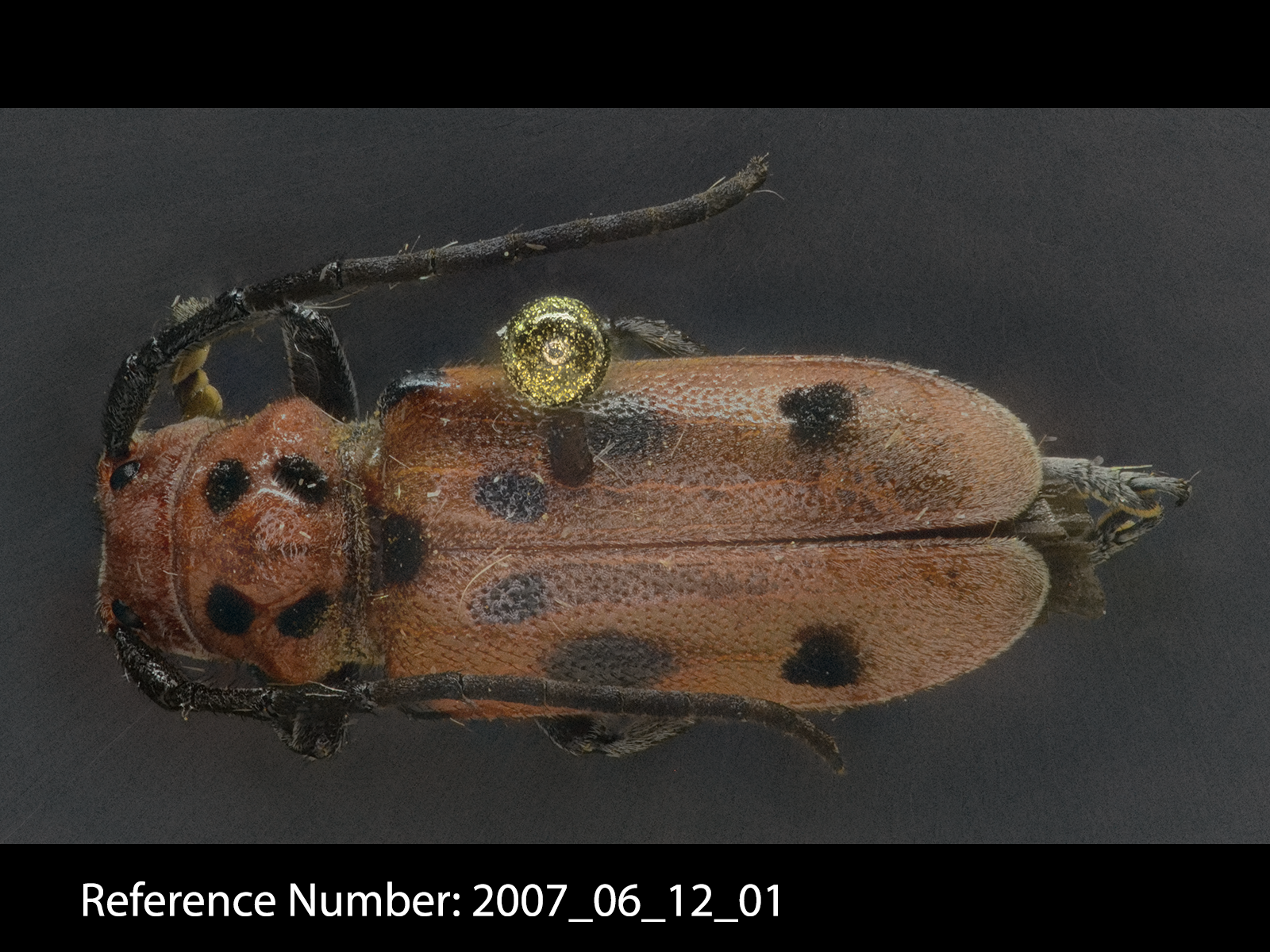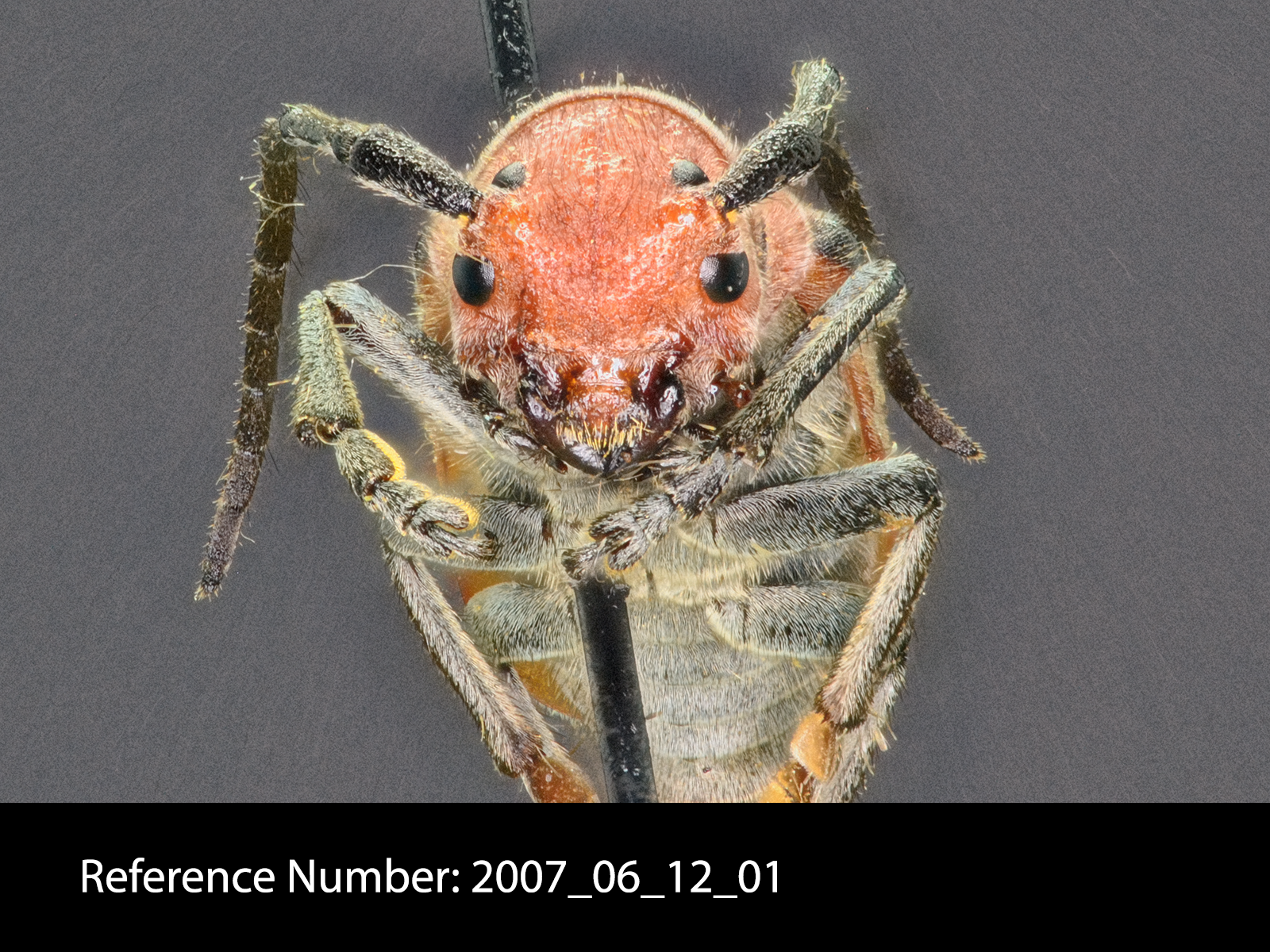COLEOPTERA: Cerambycidae
Members of the family Cerambycidae are often called long-horned beetles due to their long antennae. There are over 26,000 species known worldwide. Larvae typically bore in wood.
Click/ tap on any of the images to view a larger version of the photo. Please respect that all these photos are copyrighted. Do not use them for any purpose without first contacting us (there is a contact form on our main page for this site).
Anelaphus villosus (Fabricius, 1792). The common name for this species is twig pruner. Larvae feed in the twig itself. The species is common in eastern North America. This specimen was collected by Mark DuBois in Marshall Co., Illinois.
Bellamira scalaris (Say, 1826). This is the only species of this beetle genus encountered in central Illinois (there is no accepted common name for this species). Larvae feed on decayed wood; adults are often found on flowers (likely eating nectar and pollen). This specimen was collected by Mark DuBois in Marshall Co., Illinois.
Brachyleptura champlaini Casey, 1913. There is no accepted common name for this species. It is found throughout eastern North America. Larvae have been successfully reader on red pine (although the species likely consumes other plants as well). This specimen was collected by Mark DuBois in Marshall Co., Illinois.
Eburia quadrigeminata (Say, 1826). The common name for this species is ivory-marked borer. Adults are active from April through September. Larvae feed on various species of oak, hickory and maple. Life span of this species (from egg through adult) ranges from 10 to 40 years (most of that time is spent in the larval stages). Adults are sometimes attracted to lights a night. This specimen was collected by Mark DuBois in Peoria Co., Illinois.
Goes tigrinus (DeGeer, 1775). The common name for this species is white oak borer. Adults are sometimes attracted to light at night. Feamles usually lay their eggs on white oak trees. The larvae tunnel in the sapwood of the living tree. Beetles live as larvae for three to four years before pupating and later emerging as adults. This specimen was collected by Mark DuBois in Marshall Co., Illinois.
Liopinus alpha (Say, 1827). There is no commonly accepted name for this diminutive beetle. This specimen was collected by Mark DuBois in Marshall Co., Illinois. It is pined with a minuten pin (which is then mounted on a larger pin with a piece of synthetic cork).
Oberea deficiens Casey, 1924. This longhorn beetle species does not have a generally accepted common name. It is known from various localities in the northern United States and Canada. This specimen was collected by Mark DuBois in Marshall Co., Illinois.
Oberea ocellata Haldeman, 1847. This longhorn beetle species is commonly known as the sumac stem borer. It is known from various localities in the midwestern United States. Larvae typically bore in the stems of sumac and other plants for 3 years before pupating and emerging as adults. This specimen was collected by Mark DuBois in Marshall Co., Illinois.
Oberea pruinosa Casey, 1913. This longhorn beetle species does not have a common name. It is known from various localities in the northeastern United States and Canada. This specimen was collected by Mark DuBois in Marshall Co., Illinois. The specien is glued to a point of cardboard (due to its small size). That is the area of white (under the specimen) visible in these photos.
Saperda tridentata Olivier, 1795. The common name for this species is elm borer. Larvae feed on both slippery elm and American elm. This species is a vector for the fungi which cause Dutch Elm Disease. This specimen was collected by Mark DuBois in Marshall Co., Illinois.
Saperda vestita Say, 1824. Adults of the linden borer are sometimes attracted to light at night. It is common throughout northeastern North America. This specimen was collected by Mark DuBois in Peoria Co., Illinois.
Stenocorus cinnamopterus (Randall, 1838). Although this species lacks a common name, adults are attracted to light at night. It is found throughout northeastern North America. This specimen was collected by Mark DuBois in Marshall Co., Illinois.
Strangalia acuminata (Olivier, 1795). Although this species lacks a common name, it is commonly encountered throughout much of the eastern United States and Ontario (in Canada). This specimen was collected by Mark DuBois in Marshall Co., Illinois.
Tetraopes tetrophthalmus Forster, 1771. This is the most common species of red milkweed beetle encountered in central Illinois (there are a few other species which look similar). Both genus and species names are derived from Greek words for “four eyes” as the base of the antenna actually bisects their large compound eyes. Both adults and larvae feed on milkweed plants. It is thought the red coloring of adults is a warning to potential predators to avoid them as they are toxic (due to the chemicals they consumed from milkweeds). This specimen was collected by Mark DuBois in Marshall Co., Illinois.
